Creating a net zero carbon emissions dairy farm











Fonterra and Nestlé, the world’s largest food and beverage company, have announced a new partnership designed to help reduce New Zealand’s on-farm emissions, and, in a New Zealand first, to develop a commercially viable net zero carbon emissions dairy farm.
] by Kent Caddick

Over the five year project the farm, run with co-partner Dairy Trust Taranaki, will examine all aspects of farm operations to reduce carbon with the aim of cutting emissions by 30% by mid-2027, and a 10 year ambition of reaching net zero carbon emissions.

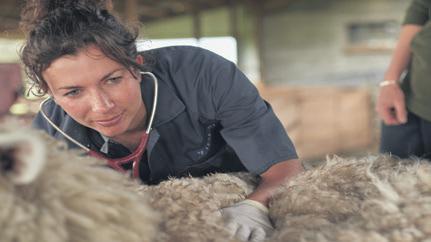
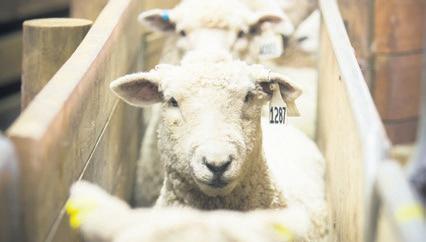
The demonstration farm at the centre of the project is a 290 hectare property surrounding Fonterra’s Whareroa site.

Dairy Trust Taranaki will work with Fonterra and industry partners to reduce total emissions on the farm, including methane, with successful solutions also being good for the farmer, good for the cow and good for the milk.
Lessons learned and activities will be shared through open days with farmers, who can then adopt the techniques and technologies most appropriate for their own farms. The practices must be economically viable and practical for farmers to adopt.
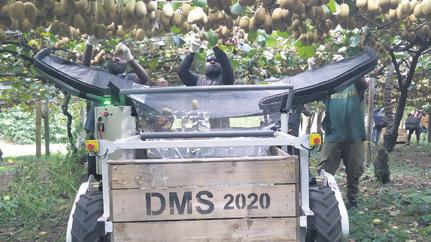
Fonterra CEO Miles Hurrell said the collaboration will help both Fonterra and Nestlé accelerate progress towards their greenhouse gas emission goals.

“New Zealand already provides some of the most sustainable nutrition in the world through its pasture-based dairy system. This new partnership will look at ways to further reduce emissions, increasing the country’s low-emissions advantage over the rest of the world,” Hurrell said.
“Part of our strategy is to lead in sustainability and we aspire to be net zero by 2050. We know we will make bigger gains, for both the Co-op and country, by partnering with others.
“Working with partners such as Nestlé is our best opportunity to create innovative solutions to local and global industry challenges.
“As well as our own goals, it’s important we help our customers achieve theirs. Nestlé has ambitious plans and we look forward to working together to discover systems that could help our farmer owners to continue to build on the already good base they have.”
Nestlé New Zealand CEO Jennifer Chappell said the Taranaki farm would build on Nestlé’s work around the world to help transform the dairy industry.

“Dairy is our single biggest ingredient, and our vision is that the future for dairy can be net zero,” Chappell said.


“To reduce our Scope 3 emissions, it’s critical we work with dairy farmers and their communities.

“For this reason, we have over 100 pilot projects with partners around the world, including in New Zealand, and 20 farms already striving towards the ambition of net zero emissions.

“Working towards a net zero farm means looking at all aspects of the farm, from cow nutrition to sequestering carbon. We will share what we learn on the journey across the dairy industry, with the goal of ultimately mainstreaming on-farm practices that will reduce the climate impact of the dairy industry.”
The partnership between Fonterra and Nestlé also encompasses the launch of a greenhouse gas farmer support pilot programme. This multi-year project will see enrolled Fonterra supplying farms get additional support to implement changes aimed at lowering their on-farm emissions, which could include solutions such as improved management of feed and pasture and enhanced milk production efficiency.
The opt-in pilot will start with around 50 farms and then be scaled up over the next three years.

30,287 copies distributed monthly – to every rural mailbox in Canterbury and the West Coast INSIDE THIS EDITION January 2023 Edition Getting the right advice early makes a difference. CALL NOW TO SEE HOW WE CAN HELP: SELWYN 03 348 8480 WEST COAST 03 755 8673 CITY 03 348 8480 PARRYFIELD.COM Judith Bullin, Partner, Parry Field Lawyers Let our team worry for you about the fine print. At Parry Field Lawyers, the trust of our clients is at the heart of our values-based practice. Located in what is one of New Zealand's fastest-growing communities, at the centre of the country's agricultural heartland, we are proud to offer clients a personal touch and to be based in Selwyn and Hokitika, as well as our city offices. Our partners and team have a strong focus on farming with a particular emphasis on the next generation and succession planning. We can help with private client work including residential property conveyancing, trust formation and administration, wills and Enduring Powers of Attorney. In a commercially thriving community, small business support is a vital part of Parry Field’s expertise. This covers both start-ups as well as established small to medium enterprise business who need support with contracts, fundraising and leases. LOCAL LEGAL SPECIALISTS
sheep p3
assist p11 Rural
Partnership: nestlé new Zealand CEO Jennifer Chappell and Fonterra CEO Miles Hurrell are aiming to develop a commercially viable net zero carbon emissions dairy farm in new Zealand. p22 Pushing pause p32
Low
methane
Robotic
vets
Busy year ahead so have your say

zon, many of which will have a direct impact on people who make their living from the land.


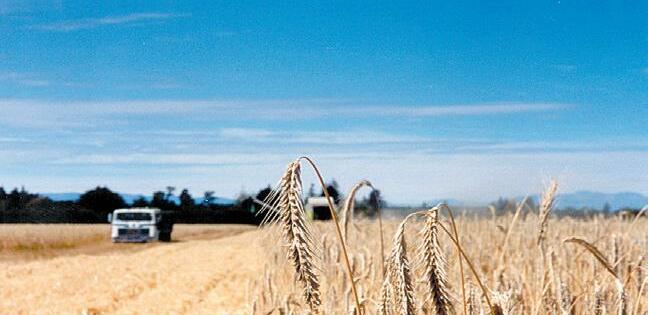
As your regional council, we have an ambitious work programme, some of which is set by Government direction, and much in response to community expectations.

As we work through the details and set priorities, it’s important to test our thinking with the community before finalising our plans.
by Peter Scott
ECan chair














Looking ahead, this year we’ll be considering our approach to climate change, resource management reform, the Future for Local Government review, and Three Waters Reform. We’ll be using whatever opportunities are available to present a Canterbury perspective to the Government as it progresses with its reforms.
At a local level, we will continue the process of re-setting rules for the types of activities that are allowed in certain locations through our review of the Regional Policy Statement, Land and Water Plan and Coastal Environment Plan.
Without going into detail, these are significant pieces of work and it’s important that you know you can get involved, sharing your local knowledge of the impact of any proposed changes so we get the settings right.
It can be complicated with a lot of technical and detailed information exploring longterm impacts or desired outcomes so it can be hard to comprehend what it means in a practical sense here and now.



We’ll be pushing hard to make sure information clearly explains the proposals and the likely impacts, and that you have the opportunity to share your views as we define the future for our region.
In the first half of this year Environment Canterbury will look to set its budget for the 2023/24 financial year. Our Annual Plan describes our work programme for the year and how we’ll fund our activities.

We’re aware of the difficulties many people are facing with inflation and cost of living







pressures – these impact on our operation too. With that in mind we’re asking staff to stick within the budget for rates revenue that was signalled last year when we made some changes to address funding for flood mitigation and repairs, and agreed to trial a new structure for public transport in Greater Christchurch.
Keep an eye out for more information from March when we expect to publicly release our draft 2023-24 Annual Plan. Even though we’re not proposing significant changes, we welcome your feedback.
Between central government, your regional council and local council there are going to be a lot of important discussions happening this year.
One of the simplest and easiest ways to influence these conversations is to get in touch with your local regional councillor.
Contact details are included on our website – ecan.govt.nz – where we’ll also release any proposals for input. Make sure you have your say.





2 January 2023 CANTERBURY FARMING FARMING NEWS Corner Main South Road and Epsom Road, Sockburn, Christchurch Ph: 03 348 4129 or 0800 655 551 Rangiora Service Centre, 78 Ivory St, Ph: 03 313 7059 www.avoncityford.com We are currently looking to o buy good quality NZ new cars If you are thinking of selling your car please get in touch with our Buyer... Forbes Gourlay | PH: 027 222 5000 WE ARE BUYING! ]
]
So it might not be the ideal time to suggest that 2023 is shaping to be another challenging year, with a raft of changes on the hori-
Summer in Canterbury is a special time. It’s also one of the busiest periods of the year, with the extended daylight hours translating to long hours on the farm.
Low methane sheep project a game-changer for farmers
]
by Kent Caddick
The $4.2 million low methane sheep programme, supported by a range of organisations including B+LNZ and the Ministry for Primary Industries through the Climate Emergency Response Fund, will use genetic selection to accelerate the uptake of low methane sheep among commercial farmers and reduce greenhouse gas emissions from the New Zealand flock.
“The carbon footprint of New Zealand sheep meat is already world-leading, however we want to give farmers the tools to keep progressing and genetics is a key tool to deliver this,” B+LNZ chief executive Sam McIvor said.
“Genetic selection for low methane sheep is currently the only confirmed technology that New Zealand farmers can deploy to reduce on-farm emissions,” he said.

“This project aims to offer every sheep farmer access to low methane genetics, help them understand the genetic merit of their flock for low methane traits and allow them to be rewarded for breeding toward lower methane genetics.


“Ultimately, it will pave the way for genetically lower methane-producing sheep becoming widespread in the New Zealand sheep flock as quickly as possible, which will benefit farmers, the wider industry and the planet.”
McIvor said genetics has underpinned the massive efficiency gains of the New Zealand sheep flock over the last 30 years and this project will help genetics support the industry for the next 30 years.
Mark Aspin, Senior Adviser Greenhouse Gases and Environmental Research at
B+LNZ, said the low methane credentials of rams used in sheep flocks will be able to be counted in on farm GHG calculators with the aim for these reductions to be captured in the country’s national GHG inventory.



“This programme will benefit both sheep breeders and commercial farmers. Genetic selection for methane requires both genotyping and direct measurement (phenotyping) information from the breeding flocks to accurately generate breeding values,” Aspin said.


“These breeding values allow rams to be compared and selected to advance the low methane trait in the breeding and commercial sheep flocks.
“This project will create a greater supply of high-quality low methane rams across breeds available for use by sheep farmers.”
As part of the project, at least 5,000 phenotypes (methane measurements of individual animals) will be collected every year by AgResearch, using portable accumulation chambers (PAC) trailers.
Genotyping many of the sires used across the breeding industry will allow the project to generate breeding values for methane for as many sires used at stud and in the commercial industry as possible.

Since 2019, methane selection has been successfully piloted with 18 leading sheep breeding flocks through a PGGRC-funded initiative supporting B+LNZ Genetics’ nProve and AgResearch service.
In the pilot rollout, leading breeders with genotyped flocks were invited to have their flock phenotype measured using the PAC trailer, which travelled across the country and measured the flocks on farm. Around 15,000 sheep were measured on farm for methane emissions.
CANTERBURY FARMING January 2023 3 FARMING NEWS ŌAMARU E22/7161 WAIMATE TIMARU RangitataRiver Waitaki River TWIZEL LAKE TEKAPO/ TAKAPŌ AORAKI | MOUNT COOK LAKE BENMORE CONTAINMENT AREA Wallabies cause serious damage to our farmland and environment. We are working hard to stop their spread and we need your help. ASHBURTON KUROW IF YOU SEE A WALLABY OUTSIDE OF CANTERBURY’S CONTAINMENT AREA DEAD OR ALIVE, REPORT IT!
Beef + Lamb New Zealand has welcomed an investment by the Government in a ground-breaking low methane sheep genetics project to give more farmers access to animals to help reduce the production of methane from their farm.
Reduction: a $4.2 million low methane sheep programme will use genetic selection to accelerate the uptake of low methane sheep among commercial farmers and reduce greenhouse gas emissions from the New Zealand flock.
Incentivising on-farm change





] with Todd Muller ] National Party Spokesperson ] for Agriculture



Change is seriously needed. We ended last year with the Government signalling it was back pedalling on its opposition to the sectors plan for agricultural emissions pricing.

He Waka e he Noa was supposed to be a partnership, but it became a process where they tried to twist farmers’ arms up their backs as far as they could, and only when the sector revolted did they suddenly rush around trying to reset their response. But farmers won’t forget, the trust is broken.
National has always said that our agriculture sector needs to crack the methane – our exporters are telling us their customers expect it, and as the world’s best animal protein producers, New Zealand should take a lead role in this.
But leadership is investing in new technology to create the tools to reduce methane. It is about incentivising on-farm change, and getting the on-farm change to occur.
As farmers understand, that’s all about how to effectively measure your methane loading on-farm and then applying management tools to sort it.
So from National’s perspective, that’s where the focus needs to go – using simple,


practical measurement, and then the tools available to actually reduce methane. The Government’s initial view that 20% reduction of sheep and beef production was acceptable.
For National, destocking doesn’t make sense when the world demand for our protein is so strong and we are the best at it.
National’s principles have been consistent. We support a price on agricultural emissions, but will build a genuine partnership – between Government, marketers, and farmers investing in new innovation – to develop pragmatic rules to allow new innovation to be piloted on-farm, and which ensures that carbon sequestered on-farm will count.
But the Government should not stop with its agricultural emissions pricing back down, they need to reset their approach to the other suite of compliance and regulations that are not tuned to farmer reality.
The feedback we received at the November-December Fieldays was extraordinary. Farmers are just so over the sheer scale of compliance. We asked what else needs to be looked at, and the response was astonishing.
On



4 January 2023 CANTERBURY FARMING FARMING NEWS
Hundreds and hundreds of people asking us to look into not only agricultural emissions pricing – but farming transitioning into pine trees, the framework behind Significant Natural Areas (SNAs), wetland rules, grazing rules, slope plans, biodiversity rules…
and on the list went and the feedback
was clear – have another look at these areas, it’s sucking the joy out of farming, and it doesn’t make pragmatic sense.
My focus as National’s agriculture spokesperson this year is to listen and be clear what we would change. That is where the hope lies.
A new year is a time for fresh plans and hope, and the primary sector will certainly be crossing its fingers for a better year in 2023. It’s certainly my strong hope that change will come this year.
Protecting productivity
] with Damien O’Connor

]

 Minister
Minister

for Agriculture, Biosecurity, ] Food Safety and Rural Communities




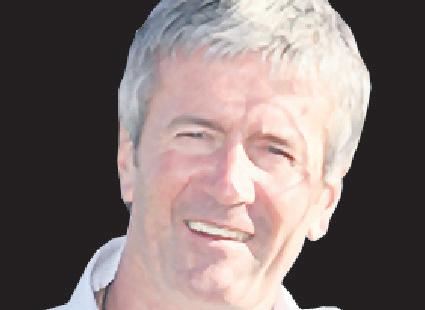


As we look to the year ahead, I want to thank our farmers and the industry for their commitment to working with the Government to eradicate Mycoplasma Bovis.

Since 2017 we have made huge progress and are now almost half-way through the 10-year plan to eradication. However, I acknowledge that it has not been without great effort – from our farmers, our sector partners, and the team at the Ministry for Primary Industries.
Eradicating Mycoplasma bovis would be a world first and the Government has committed to eradication to protect our farmers and industry from the costs of endemic infection – potentially saving billions of dollars.
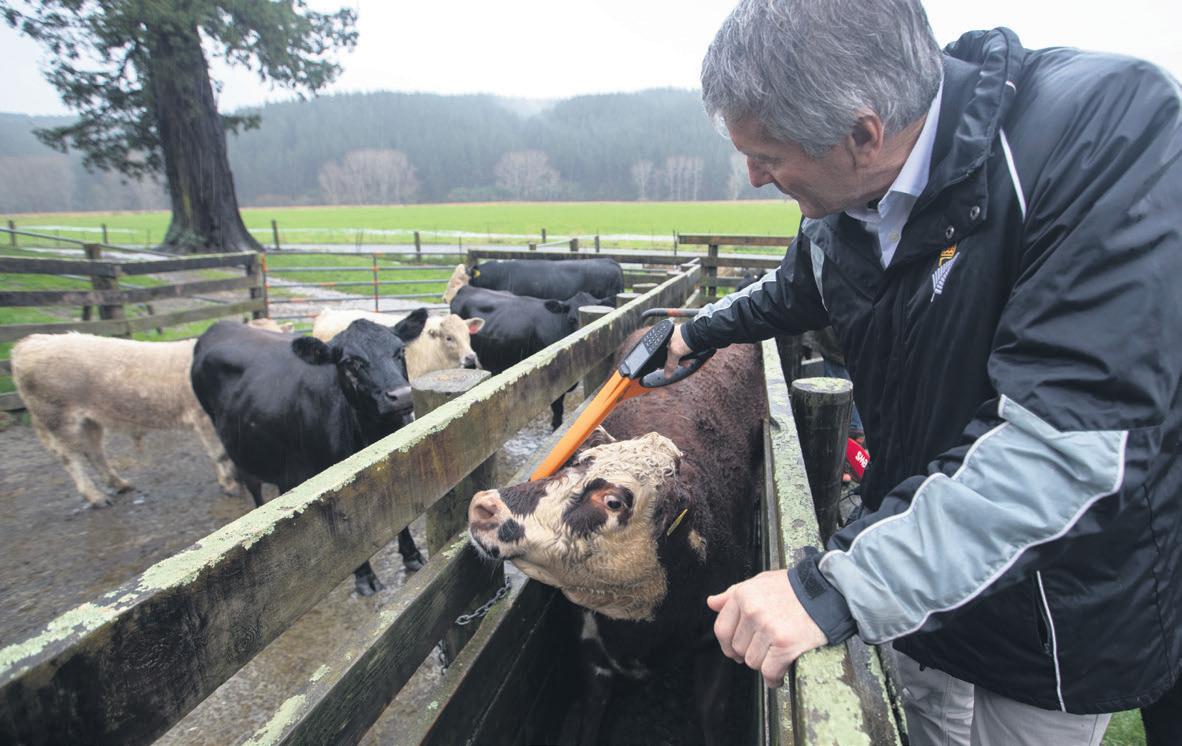
Over summer, our fortnightly bulk tank milk screening programme and beef surveillance have continued running and we remain vigilant in picking up any infections. MPI will also continue working with the current active farms to de-stock, clean, and disinfect the properties.
One of the most important things that farmers can continue to do is using the National Animal Information Tracing system (NAIT).
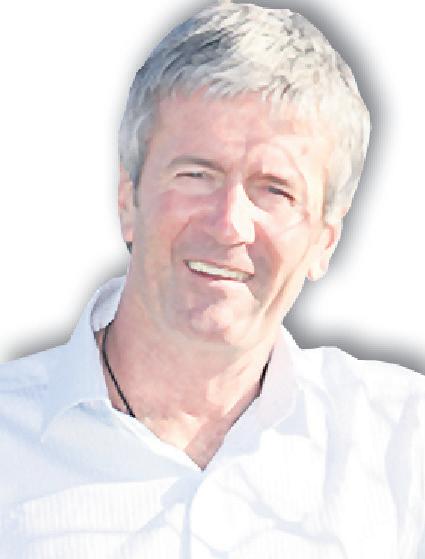
When NAIT records are complete and up
to date, it allows us to quickly and accurately track infected animals, reduce the risk of further spread, and complete trace-back investigations to find the source of infection.
Without good NAIT records, we cannot get an accurate picture and it’s all the more stressful for affected farmers and our M.
bovis team. Unfortunately, we’ve seen that happen with some of the currently infected properties.


So while there has been great improvement in NAIT record keeping, I strongly encourage farmers to keep up this good work and spread the word.
To serve and protect: To protect our herds one of the most important things that farmers can continue to do is use the national animal Information Tracing system.

The eradication of M. bovis is truly a joint effort and would not be possible without the cooperation of our industry partners and farmers. Thank you all for the hard work and sacrifices that have been made to protect our herds and the productivity of the primary sector.

CANTERBURY FARMING January 2023 5
FARMING NEWS
A happy new year to everyone and I hope that 2023 has got off to a good start for you all. I was lucky to use the holiday period to spend time with family and travel the scenic West Coast.
Licensed building practitioners




This is work which is essential to prevent unsound and leaky buildings and ensure that the dwelling is constructed to the highest standards of the building industry.


In most residential building projects a building consent will be required for design, construction and alterations.



Work that does not fall under the definition of restricted building work is usually work that does not require a building consent such as a small carport, some demolition work, the alteration of some internal non-structural walls. It pays to check with the Council to find out whether a building consent is required for the project.
Where the project comprises restricted building work the owner must engage a Licensed Building Practitioner for the design and completion of the building project.

In 2021 the Government introduced a new Code of Ethics for Licensed Building Practitioners which came into force on 25 October 2022. The object of the Code of Ethics was to ensure that the high standards are continued in the building industry and to give consumers confidence that their project will be completed satisfactorily.



The Code of Ethics provides that all Licensed Building Practitioners have to keep up to date with the skills required to design and carry out the work they are qualified to
do. The work of the licensed building practitioner relates to the following categories: design, carpentry, roofing, brick and blocklaying, external plastering, foundations and site works. Most LBPs will be licensed in the category where their skills lie.
Should a Licensed Building Practitioner fail to carry out their obligations under the Code of Ethics, the owner may lodge a complaint with the Building Practitioners Board in respect to work undertaken after 25 October 2022. The Board has disciplinary measures it can take if the complaint is upheld.
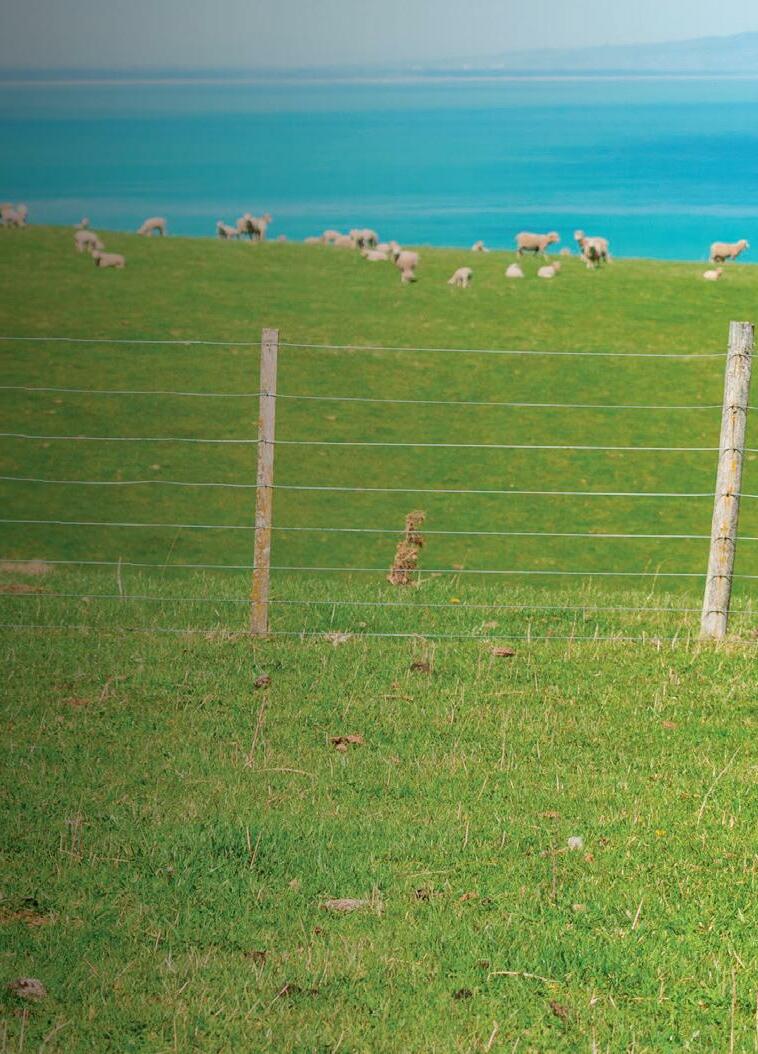




There are some horror stories about the activities of some of the cowboys in the building industry. In one instance a building company was engaged to erect a home. The director of the company was very poor at building but he was very skilled at forgery, and he used that skill to forge Council inspection reports, he provided another builder’s licence to Council inspectors, he failed to fix any of the defects which the Council inspectors had requested.
The list of failures goes on and on. Finally he skipped the country and the company was placed in liquidation. The property was sold and the Council ordered that the dwelling be demolished.
John, Bessie Katrina and Ella wish all readers a very happy New Year.

CANTERBURY FARMING RURAL PROFESSIONALS ] with
]
& Son Looking forward to a busy 2023. Call us now for great subdivision advice. Call 0800 787 775 for a chat hello@survusrural.co.nz www.survusrural.co.nz Visit our website for more information: www.totalbusinesscomplianceltd.co.nz TOTAL BUSINESS COMPLIANCE LTD WE DO IT ALL FOR YOU! • Safety Audits On Farm • Health & Safety Manuals • Policies & Procedures • Staff Training • Signage • Monthly Staff Meetings On Farm • Employment Contracts • Contractors Agreements HEALTH & SAFETY PROVIDERS HIGHLY COMPETITIVE PRICING P: 09 439 2091 • 027 286 2329 | Northland wide “Your helping hand” Property | Family | Wills Trusts | Estates | EPAs | Rural Business | Traffic | Employment Leeston (03) 324 3033 Email: lawyers@anglands.co.nz | www.anglands.co.nz Solicitors of Selwyn since 1965 Ronald W. Angland & Son LAWYERS
Bessie Paterson LLB
Ronald W Angland
Any-one contemplating building or making alterations to a home or
small/medium sized apartment
building must comply with the provisions of the Building Code and check whether the work to be undertaken is “restricted building work.”
This article has been prepared by Bessie Paterson, a partner at ronald W angland & Son, Lawyers, 2 Chapman Street, Leeston.
rollercoaster
] with andrew Wyllie
] Forsyth Barr

The highest inflation in decades has remained stubbornly persistent. Initially it was driven by a shift in consumer spending patterns while people were in lockdowns (more demand for goods and less for services) and inability of global supply chains to respond. Goods’ prices soared.
Earlier last year the conflict in Ukraine added to those pressures through a spike in energy, food, and other commodity prices. Now, tight labour markets are empowering workers to push for higher wages to compensate for climbing prices. Central banks are committed to bringing inflation down to target levels. They have aggressively raised interest rates. Whilst there are growing signs inflation is likely peaking including declining commodity prices and freight costs, higher inventory and greater retailer discounting, easing labour market pressures, and sharply slowing housing markets, questions remain. How quickly will it abate? How far will interest rates rise?
And will it require a recession? By their own admission, central bankers don’t know. Outcomes will be affected by unpredictable factors such as the war in Ukraine, and China’s
withdrawal from its zero-Covid policy. The last few years have emphasised just how difficult it is to predict the outlook in today’s interconnected and unprecedented global economy. Unfortunately, uncertainty and market volatility may run for a while yet.
This backdrop is challenging for investors. If inflation continues to moderate we expect equity markets will remain robust. Conversely, if we see a significant recession it would have a material impact on corporate earnings and put renewed pressure on stock prices.

Companies generally resilient despite biting costs



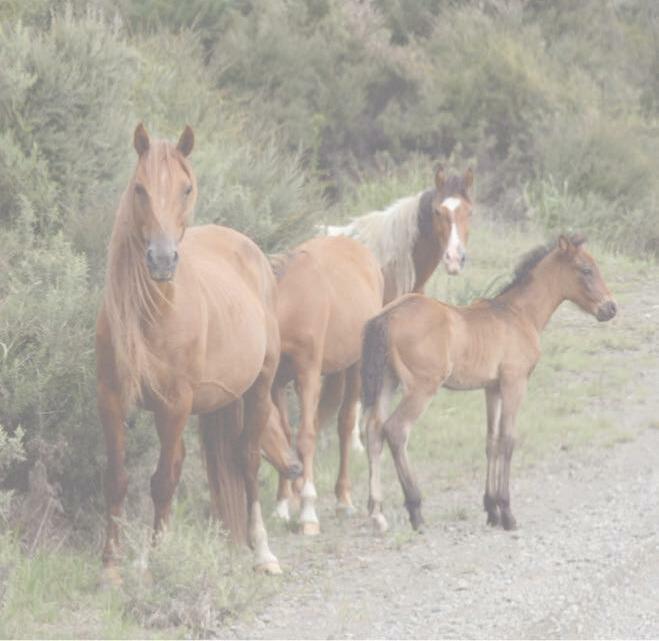



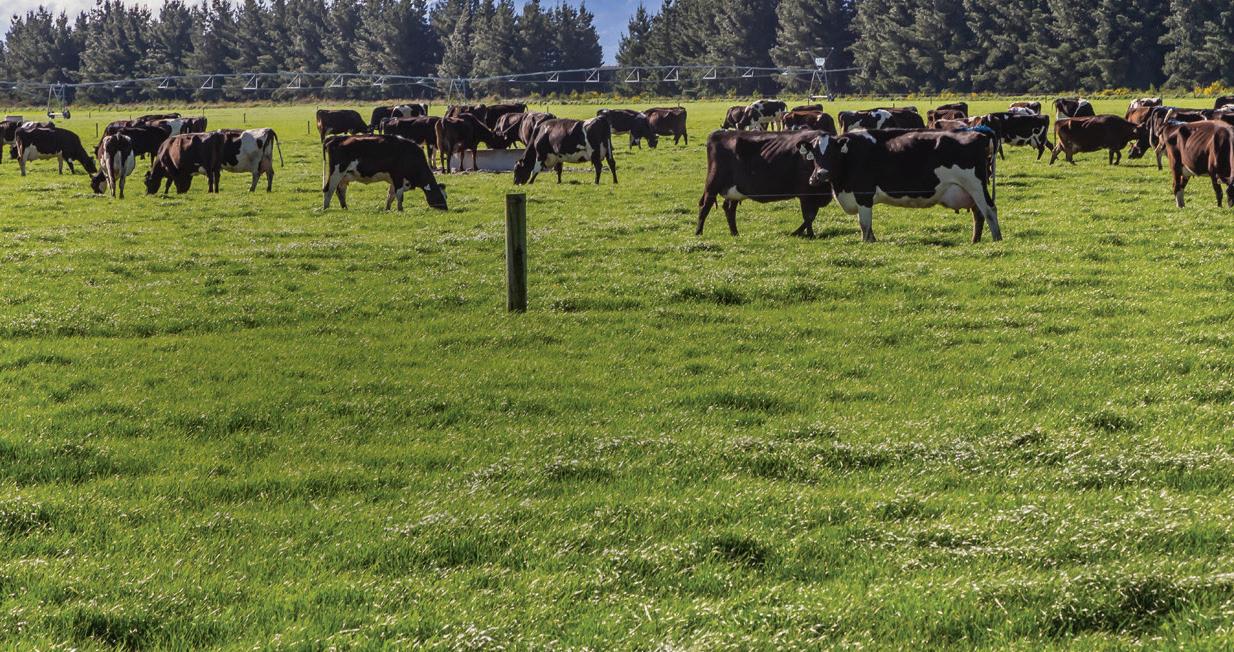



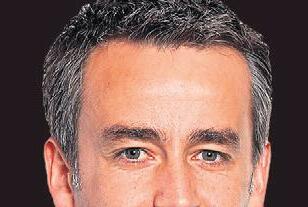




Despite the market volatility and uncertain economic outlook, the performance of companies has so far been largely better than anticipated.



Over October and November we had reporting season, when companies report their financial results to the market. There were some headline grabbing disappointments, mainly from the mega-cap tech companies driven by concerns around an economic slowdown and rising costs. However, more broadly, the significant majority of companies’ results have come in ahead of expectation, fuelled by strong sales growth, albeit higher
costs has meant (outside of the energy sector) profit growth has been restrained.
China questions



In today’s interconnected world events in one part of the world ripple around the globe. Policies and challenges in China continue to influence the economy and markets.
At October’s Chinese Communist Party congress, President Xi Jinping consolidated power and purged the leadership of moderates who favoured economic and liberal reform. Chinese stocks (listed in Shanghai, Hong Kong, and abroad) plunged.
In November they’ve bounced back (at least in part) with signs China will slowly relax its zero-COVID policy which has subjected the country to harsh periodic lockdowns. China is the largest manufacturing and export economy in the world — these lockdowns have flow on effects to global supply chains. How quickly restrictions will be eased will likely depend upon the ability of China’s health system to cope with outbreaks.
More significant over the medium to longterm are the structural imbalances in China’s housing market — extreme unaffordability, oversupply, high levels of speculation. Additionally, demand will likely shrink in the years
and decades ahead due to demographic trends. Urbanisation (and construction) has been a major driver of its economy (and global commodities demand) over the past 20–30 years, but now Chinese policymakers are trying to wean the economy off debt-funded housing construction/speculation. But it’s a balancing act. It remains a question as to how much support they’re willing to provide the economy and housing market in the nearterm.
We appreciate that market volatility and economic uncertainty doesn’t make an easy backdrop for investors.
This article was prepared as at 30 november 2022 and provides market commentary for the threemonth period ending on that date. This column is general in nature, has been prepared in good faith based on information obtained from sources believed to be reliable and accurate, and should not be regarded as financial advice. To discuss your investment options please contact andrew Wyllie, who is an Investment adviser and is Forsyth Barr’s Christchurch Branch Co-Manager. He can be contacted regarding portfolio management, fixed interest, or share investments on 0800 367 227 or andrew.wyllie@forsythbarr.co.nz.



CANTERBURY FARMING January 2023 7 RURAL PROFESSIONALS
PROFESSIONAL RURAL REAL ESTATE ADVICE Residential / Commercial / Rural / Lifestyle Ben Turner 027 530 1400 03 375 4736 ben.turner@bayleys.co.nz WHALAN & PARTNERS LTD, BAYLEYS, LICENSED UNDER THE REA ACT 2008 Call Ben today for an altogether better approach to your rural real estate needs along with an up-to-date market overview. Looking at off-farm investments? When you are thinking about your investment options, talk to Forsyth Barr To get personalised investment advice and portfolio management specific to your investing needs, talk to Investment Adviser Andrew Wyllie in confidence on (03) 365 4244 or email andrew.wyllie@forsythbarr.co.nz CHC6189-02March 2021
the market
Markets continue to whipsaw. Inflation, implications for interest rates and the global economy remain the focus.
Riding
Surfing for Farmers is coming to a beach near you this summer
Bayleys is proud to be a national sponsor of Surfing for Farmers, which offers you and your staff the opportunity to get off the farm for a couple of hours each week during that busy time of year.

Join the team weekly during the summer months at four locations in and around Canterbury.
Follow us on Facebook @surfingforfarmers surfingforfarmers.com
Surfboards, wetsuits and coaching is provided, followed by a BBQ, cold beers and a debrief. There is no charge, so no excuse not to join.
8 January 2023 CANTERBURY FARMING HEALTH ON THE FARM
Residential / Commercial / Rural / Property Services
WHALAN AND PARTNERS LTD, BAYLEYS, LICENSED UNDER THE REA ACT 2008 Reach out to your local contact Hickory Bay Kristin Savage | 021 680 190 Gore Bay James Northcote | 027 216 6822 Sumner Sandra Taylor | 021 151 8685 Kakanui Thomas Abernethy | 021 869 805
Craft beers and rafts of gins
Cope-Williams
However, look at the brewery business here in New Zealand now.
The supermarkets and bottle stores have a huge range of brews all with very colourful and imaginative labels and stories behind
] with John arts
Should I take Co Enzyme Q10?







CoQ10 is made in your liver from the same enzymes that make cholesterol. This is why drugs that reduce cholesterol can significantly reduce circulating CoQ10.


I recently spoke to a client who had experienced a lot of muscle pain and stiffness while on statins. After just a month on high grade CoQ10 (CoQsol®) the pain had completely gone and is now able to tolerate the medication without side effects. I generally find it takes 1-2 months to restore muscle function and energy.
Muscle issues from statin use is one of the most common reasons from muscle and tendon pain and weakness. It is a shame that many suffer needlessly as in most cases is quickly resolved with a high quality CoQ10 without having to stop the medication.
What makes CoQ10 unique is its ability to accept and donate electrons. This enables CoQ10 to move hydrogen electrons within your cell mitochondria to make the energy your body requires. Inadequate





Part 2
them. I think Christchurch alone is home for many Craft Beer breweries who sell their products in cans, bottles and in restaurants and bars.
Thankfully for many we now have beers such as APA, IPA, cloudy, pilsener, hoppy, and many more styles. For those traditional types, there are still the basic types produced by the main companies.
I think it is so good that we are able to cash in on the natural ingredients we have here to build a new industry.



The wine growers did the same thing many years ago, and now it is the beer’s turn. Local water, the best hops and malts grown here and the industry has come of age.

Then take a look at the gin production here which has burst onto the scene overnight. Years of having no options apart from what was imported, we now have I believe, something like 50 or more local versions of gin.
The Kaiapoi distillery led the charge many years ago, and tipped their toes into the mar-

ket with their scotch and gin, but, wow, we are now swimming in different options.
The thing that intrigues me is the different tastes and flavours both the beers and the gins are tempting us with. In the past I thought gin was gin, you added tonic, ice and a slice of lemon and that was that.
No longer that boring, people now have a range of gins on offer depending on one’s mood or situation. I know that scotch can differ greatly, but gin was always, it seems just gin.
Anyway, well done to those who have created two new industries, they have bought us all into a new era and allowed us all to develop ou taste buds to appreciate the finer things in life.
Think back to the early wine drinking days, or should I write daze, when we thought Cold Duck was the thing, and was not that long ago if you think about it.
What a glorious path we are now walking along.
CoQ10 levels reduce energy output and this is felt as tiredness and often as muscle weakness.



I regularly prescribe CoQ10 for those with health issues known to reduce energy especially those with autoimmune or neurodegenerative problems. While CoQ10 is not a cure it can help to lift general energy and well-being.
In most cases I will add CoQ10 as the patented CoQsol® or my specialised MTQ10 formula for those needing extra CoQ10 plus a lift in energy.
MTQ10 combines CoQ10 with a B complex plus other energy co-factors. Most people feel a real difference within 1-2 months.
John arts (B.Soc.Sci, Dip Tch, adv.Dip.nut.Med) is a nutritional medicine practitioner and founder of abundant Health Ltd. For questions or advice contact John on 0800 423559 or email john@ abundant.co.nz. Join his newsletter at www. abundant.co.nz.





Whether you’re looking to sell or just want to stay up to date with what your most valuable asset is worth, give me a call for a confidential chat.

their next move.
Adam Whitelock
027 408 3424







adam.whitelock@bayleys.co.nz


CANTERBURY FARMING January 2023 9 HEALTH ON THE FARM
Abundant Health Co Enzyme Q10 Abundant Health CoQsol: (60 Softgels) $49.95 each plus $5.99 postage BEST BUY: 3 Bottles for only $134.85 ($44.95 per bottle) FREE freight. BEST BUY: 3 Bottles for only $224.85 ($74.95 per bottle) FREE freight. MTQ10: (60 capsules) $79.95 each plus $5.99 postage CoQsol® patented CoQ10: • Ideal for support during treatment with statin medication. • Helps protect cholesterol from oxidation. • Supports heart muscle, heart rhythm, heart circulation and normal blood pressure. • Promotes eye health. • Supports energy and general well-being. Ingredients: Rapid absorption CoQ10 (100mg per softgel), natural vitamin E, lutein, zeaxanthin and beta carotene. Mitochondrial (MT) support formula: Supports energy and immune functions damaged by in ammation and various health problems. • Incudes potent antioxidants to protect cell energy processes. • Promotes normal energy, good circulation, normal blood pressure and general cardiovascular health. Ingredients: Natural CoQ10®(100mg), full B vitamin complex, pure ActiVin™ grape seed extract, R- Alpha lipoic acid, Acetyl carnitine 95% Curcumin, N-acetylcysteine and Resveratrol. For more information please contact John Arts 0800 423 559 or email john@abundant.co.nz Or order online at www.abundant.co.nz Abundant Health Ltd, PO Box 8348, Cherrywood 3145
generally make all the Co enzyme
take extra as a supplement. ALL OVER RURAL ADAM WHITELOCK When making the decision to sell any property, the decision is a big one.
am here to help you profit from the best advice and maximise the value of your property. I want my clients to enjoy the journey with me. My philosophy is to provide first class service to all of my clients, and to assist their changing property requirements and aspirations. Many property owners, that I have spoken to, are curious to know the current value of their property as this allows them to set financial goals
plan
We
Q10 (CoQ10) we need. Some however should
I
and
for
WHALAN AND PARTNERS LTD, BAYLEYS, LICENSED UNDER THE REA ACT 2008
] by rob
The small regional breweries such as Timaru and Nelson had been swallowed up and not even found on a label.
It doesn’t seem long ago that you either drank a DB product or a Lion Brewery one.
Common questions from farmers on stress and burnout

] Article supplied by Farmstrong How do you manage unhealthy stress?
Awareness is key. The earlier you recognise the signs of unhealthy stress the better you’ll be able to manage them.
Recovery periods are vital. Daily and weekly ‘down time’ is important as well as taking a holiday after really busy times.
Secondly, come up with a plan. Instead of trying to do everything, it’s about asking yourself what are the one or two top things I need to work on right now? Focus on them and park everything else. Once you’re feeling back in charge and your stress levels go down, some of the other issues bugging you may disappear.
A way to cope with lots of demands is by reducing or delegating them to others.
What is burnout and how do you know if you’ve got it?
Burnout is essentially your body hitting the wall and saying, “I’ve had it. You should’ve given me a break and you haven’t.” Your body is letting you know that it’s mentally and physically exhausted.
Signs include:
• low energy and motivation to do even normal everyday tasks
• severe irritability where little things become highly frustrating
• losing your temper easily and often
• inefficiently tackling and completing tasks
• feeling ineffective and that you’re not accomplishing enough.
If some of these look familiar to you, then you may be experiencing burnout or heading towards it.
How do you prevent burnout?
When people are under pressure the things that disappear are often the things that keep us well and prevent us getting burnt out.
Continue to:
• socialise with other people
• exercise regularly
• eat well
• continue to learn
• contribute to the community

• get off the farm and do something you enjoy with others.
Building in enjoyable activities is really important. Those are the things that give us more coping space and keep us feeling on top of things.
At what point would you consider it more than just ‘calving stress’ and be seeking help?
A general rule of thumb that a person is under unhealthy stress, is when their daily functioning and relationships are being impacted. For example, if the person doesn’t seem
themselves and shows ongoing changes in their normal behaviour and thinking patterns.
When we just keep going without a break from the ongoing physical or mental demands we are facing, our body finds it hard to keep up and the cracks begin to show.
A catch-up with your GP, a local counsellor, Rural Support Trust worker or supportive friend, can give you some ideas or a plan to get things back on track.
For more on how to maintain your mental health wellbeing on the farm go to: www.farmstrong.co.nz Canterbury Farming thanks Farmstrong for being able to reproduce this article.
10 January 2023 CANTERBURY FARMING HEALTH ON THE FARM
Tackling the horticulture labour shortage one Kiwi at a time
The











 ] by Kent Caddick
] by Kent Caddick
Nick Pickering, lecturer at the University’s School of Engineering, said the challenge is to use automation technology to invent something that will assist kiwifruit pickers on orchards and open up jobs to a wider group of people.

“The industry is suffering serious labour shortages especially during harvest, so we’ve come up with this solution that can enable more people to do the job of picking kiwifruit.”

Pickering said the e-Bin aims to be technically feasible, financially viable and desirable for all stakeholders.

“The key factor is we needed something simple that can be commercialised quickly to help address the labour shortages we’re seeing.”
He said picking kiwifruit can be physically demanding work, as people are required to carry a large bag that they fill as they pick. Once filled a bag can weigh about 25kg, and then it also needs to be emptied into a larger bin.
The e-Bin takes the hard work out of picking the fruit. Instead of each individual having to carry around a bag, a group of four pickers walk alongside the e-Bin, which is on wheels. As each kiwifruit is picked, it is dropped into a fruit catcher on the e-Bin. A net cushions and secures the fruit, before it rolls down and comes to rest in the main bin.
Pickering said the e-Bin will be validated in
trial work this coming season and likely commercialised soon after.
“The e-Bin has been put to the test, first with 3D printed fruit and then out in the field, with researchers looking at a number of factors including productivity and fruit damage. The results are promising in terms of the eBin’s ability to reduce fatigue and safely operate in an orchard environment.”

The e-Bin human assisted harvesting project has been a collaboration with Zespri, the project sponsor. It has also involved students and academics from the School of Engineering and industry experts.
Zespri Innovation Leader of Orchard Technology Peter McHannigan said there’s po-





















Inventive: The university of Waikato developed e-Bin could help to reduce the impact of labour shortages especially during harvest.
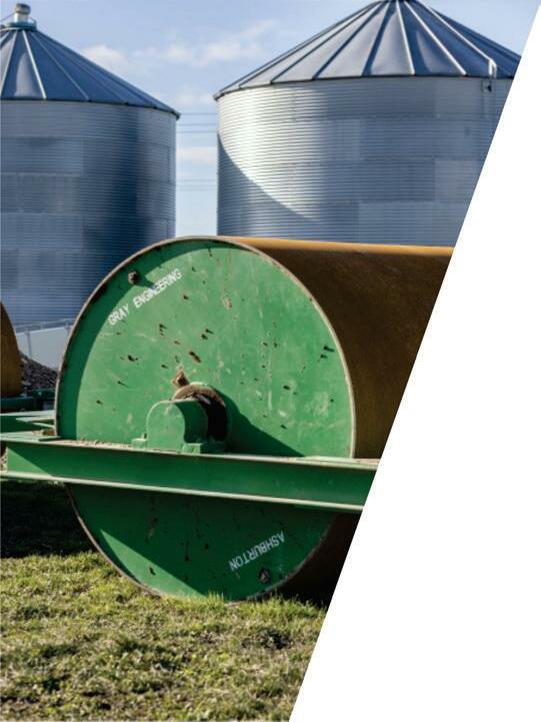
ciano Garcia said increasing the labour pool has to be the most important goal for this project.
“There are a lot of people who love to work outdoors but cannot handle the weight and the regular bending involved in the harvest.”
CANTERBURY FARMING January 2023 11
tential to solve many issues with assisted robotics but they must make commercial sense.
“Through this project we are looking at the total financial cost-benefit assessment.”
Garcia
Contracting managing director Lu-
has developed an electronic fruit bin that assists in the
University of Waikato
harvesting of kiwifruit to help make picking lighter work.
































12 January 2023 CANTERBURY FARMING 6.95% P.A. FIXED RATE* 24 & 36 MONTH LOAN TERM FINANCE AVAILABLE YAMAHA SERVICE INTERVALS UP TO 150 HOUR^ SERVICE INTERVALS YAMAHA RELIABILITY ON SELECTED ATV + ROV Grizzly 350, Kodiak 450/EPS, Kodiak 700 EPS, Grizzly 700 EPS/SE, Viking 3/SE, Viking 6, Wolverine X2 Utility /XT-R, Wolverine X4, Wolverine RMAX 2/4 XTR 1000 Grizzly 350, Kodiak 450/EPS, Kodiak 700 EPS, Grizzly 700 EPS/SE, Viking 3/se Viking 6, Wolverine X2/XTR/Utility/Rspec, Wolverine X4, Wolverine RMAX 2/4 XTR 1000 KODIAK 450 EPS RIDE AWAY KODIAK 450 RIDE AWAY WOLVERINE X2 UTILITY RIDE AWAY $15,060 EXC GST $13,913 EXC GST $28,608 EXC GST 3 YEAR GENUINE^ FACTORY WARRANTY www.yamaha-motor.co.nz FIND YOUR LOCAL DEALER AT: OFFER AVAILABLE FROM 1 DEC 2022 TO 31 MAR 2023 24 & 36 MONTH LOAN TERMS AVAILABLE $325 ESTABLISHMENT FEE APPLIES *FINANCE DISCLAIMER: Zero deposit; annual repayments only with first repayment due after 12 months and 6.95% p.a. fixed interest rate on a 24 or 36 month loan term. Asset backed commercial applicants only with NZBN registered for minimum of 1 year. Maximum amount financed is $35,000 and applies to AG125, AG200, TTR230/A, YFM350FA, YFM450FB, YFM450FB/P, YFM700FA, YFM700FB/P, YXC700P, YXE850P, YXF850, YXM700, YXE1000PSEM, YXF1000PSEM. Offer available from December 1, 2022 to March 31, 2023 with final settlement date of April 30, 2023. Credit criteria, fees, charges and conditions apply including an establishment fee of $325, $10 PPSR fee and a dealer administration fee. Finance to approved applicants by Yamaha Motor Finance New Zealand Ltd. (YMF) NZBN 9429036270798 FSP 9622 ^ Warranty cover is subject to a range of requirements including following the service schedule & applicable vehicle load/towing limits. Service Intervals are dependent on usage and environmental factors.
OSPRI release
by Kent Caddick
The research by Callaghan Innovation was undertaken in response to customer and industry concern the current tags in use may not be fit for purpose in the New Zealand farming environment.


OSPRI’s Head of Traceability Kevin Forward said tag retention was the number one concern farmers expressed on issues affecting livestock traceability.
“Part of that concern was a perception that tags were falling out earlier than would have been expected,” Forward said.
“Based on research results of our international partners, and the lack of comparative research in New Zealand, we needed to determine whether the chemical make-up of the tags was a contributing factor.”
NAIT tags from the main producers were collected from slaughterhouses across the country and tested for chemical and physical defects over time.



The results found there was no significant change in the chemical composition and hardness of the samples, regardless of age or region. Some tags showed some colour change and yellowing of the plastic, but this was deemed to be a visual change only and did not impact the durability of the tags.
tag research findings

“Now that that chemical composition of the tags and New Zealand’s environmental conditions have been excluded as contributing factors, this allows an increased focus on the other possible causes,” Forward said. Callaghan researchers also spent time on farm to investigate tag design features, tag applicators and the practical tagging process.
During their time on-location, the main cause of tag failure identified was due to fence wire getting lodged behind the tag. This same failure could be caused by animals feeding in scrub as well.
Another identified point of failure was the ability to install some ear tags with a range of different brand applicators.


“This can cause issues as using the










wrong brand of applicator could damage the tag, and result in the tag being more prone to failure.”







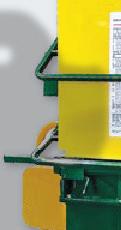

Forward said with the findings of this research in hand, OSPRI remains committed to supporting farmers by providing education on how best to meet their obligations, including best tagging practices to further increase tag retention rates.

CANTERBURY FARMING January 2023 13 Palmer Agri Parts Direct Ltd .... '" ..... ... .,__... Kverneland • Overum • Kuhn Lemken• Dowdeswell•Vogel & Noot•Gregoire Besson• Clough • Duncan •Terradisc • Maxitill •Yeoman•Vibroflex •Connershea•Goliath• IHC• Sunflower•Topdown •Salford• Kongskilde•Napier •Vaderstad We can also manufacture any point you need! 0800472 563 0800 4 PALMER Farmlands admin@palmeragriparts.co.nz I 34 Robinson Street, Riverside Industrial Park, Ashburton Palmer Agri Parts Direct imports and manufactures quality parts that fit machines indicated. These parts are not sold as genuine parts. co-operative
]
TPW Backease Hoist • Versatile, compact & cost effective • Safely lifts loads up to 600kg with extendable 1.2 - 1.8m boom • Lightweight at only 78kg and easy to install with no loss of load space • Features hydraulic lift and pressure regulated downwards movement Evo Shearing Plant • #1 selling shearing plant in the world • Winner of multiple WorkSafe awards • Unrivaled performance and superb relibility TPW Xpress Woolpress • #1 selling & most trusted woolpress in the world • Industry leading safety features to keep your workers safe • Includes new indicator with audible & visible alarms Never compromise. Heiniger New Zealand | (03) 349 8282 | heiniger.co.nz Choose capital equipment trusted by New Zealand farmers, contractors and shearers to get the job done and you’ll never have to compromise on safety, performance or reliability.
NAIT
OSPRI has released its research findings into National Animal Identification and Tracing (NAIT) tags, to determine whether the tags used in New Zealand are degenerating due to climatic factors in various parts of the country.
Researched:
naIT tags have been investigated for their durability.

14 January 2023 CANTERBURY FARMING
High capacity, high performance balers


Their main services are baleage (rounds and squares) and silage which sees their lead baler, a 2020 Variable Chamber V461R, regularly put to work across hay, straw and silage, including whole crop and lucerne.
“I swapped to John Deere balers in the 90’s because they were making better bales. Bales from the other brands didn’t have enough in them, and they did not have enough speed,” says Brent Trounce. “I have stuck with them for the service and because they are a good reliable baler.”
The high capacity and heavy-duty design of John Deere balers allows Trounce Contracting to make quick work of any crop.

“They cope with thick and thin. They are indestructible,” says Brent.
“We’ve baled alongside others using different brands and they can’t keep up or get the same weight into the bale.”


In addition to the V461R, Trounce Contracting have a comprehensive line-up of John Deere equipment, featuring a 990 Baler, 7550 and 7300 Forage Harvesters, and various tractors including a 7R 250, 6155R and 6130R – all delivered in the last 12 months.
Whether you produce straw, hay, baleage or silage, a lot of one, or some of everything, the John Deere baler line up has something to meet the needs of any operation.

Rock-hard, super dense and perfectly formed round bales of concentrated energy are the norm for the V461R Variable Chamber Baler. Combine this output with high-speed tailgate cylinders and moving sheet sides that stretch the bale chamber
by 100mm when unloading, and you have a 5 second unloading time that will see you save one whole minute for every six bales.

Robust, compact, and great for the majority of crops and conditions. The V451M Variable Chamber Baler is a true multi-crop baler that excels where speed is essential.
Packed with high performance features like a high capacity 2.2m wide feeding system, 480mm diameter converging auger and ad-
Whether you produce straw, hay, baleage or silage, the John Deere baler line up has something to meet the needs of any operation.
Pictured the John Deere V461r Variable Chamber Baler.
justable diameter for maximum bale weight, the V451M is a highly reliable unit that will perform season after season.
The C461R Combi Baler is a powerful workhorse, capable of producing high volumes in short harvest windows. Fast unloading times and a high-speed 40 RPM wrapping arm unit, in conjunction with the high capacity feeding system and advanced bale chamber technology allows you to push your baling capacity way beyond current limits, whether your baling silage, hay or straw.
Key features include a high performance 2.2m wide feeding system, a wide hydraulic drop-floor clears even the worst blockage with ease, and 3 powered fixed rolls and 2 large diameter belt driving rolls inside the chamber.
To learn more about the range of John Deere balers, or to book a demo, contact your local Drummond & Etheridge on 0800 432 633 or visit www.dne.co.nz
CANTERBURY FARMING January 2023 15
] Advertorial supplied by ] Drummond & Etheridge
John Deere balers play an important role for South Canterbury
based contractors, Brent, Sally and Ethan Trounce of Trounce Contracting.















































16 January 2023 CANTERBURY FARMING
For all your farm machinery needs









Diesel-Tech Machinery, a well-established machinery repair workshop which delivers top quality vehicle repairs and servicing in Canterbury, has now expanded its range of farm machinery.
by



Diesel-Tech Machinery
Diesel-Tech Machinery has an experienced team who operate a full service workshop in Mid Canterbury (Methven) and North Canterbury (Rangiora).

In recent times Diesel-Tech Machinery has expanded its range of farming machinery products to include a wide variety of tools and machinery made for use on the farm, from chainsaws to All Terrain Vehicles (ATV) and Utility Terrain Vehicles (UTV), as well as lawnmowers, tractors and mulchers.





Diesel-Tech has a full range of internationally renowned Husqvarna chainsaws, from the lightweight, versatile and easy to use 135 MKII through to the mighty 3120 XP which is one of the world’s most powerful chainsaws. The 3120 XP was built for professionals.
Many farms wouldn’t be without a motor bike or an ATV or UTV to get the job done and Diesel-Tech Machinery has something for everyone, including from local New Zealand company UBCO with its electric powered two-wheelers for work and play. Also they stock the fast-growing brand CF Moto and their full range of exceptional quality and value machines.
Of course, tractors are a part of DieselTech’s line up, stocking TYM tractors from 20hp to 100hp, powerful McCormick tractors for the bigger jobs, and specialised Landini tractors.
New to Diesel-Tech is a range of Elho
tractor attachments including swathers and tedders, mowers, forage harvesters, bale wrappers, feeders and shredders, stonepickers, and mulchers. Elho products are designed and built in Finland and have a growing international reputation.

In addition Diesel-Tech Machinery offers a wide range of services and repairs for all makes and models of vehicles including commercial transport, construction, agricultural and private.
With a strong commitment to safety, quality, customer satisfaction and integrity Diesel-Tech Machinery will go that extra mile to guarantee your vehicle is safe with an ongoing service to help maintain equipment and machinery after purchase, including hydraulic repairs, and air conditioning servicing.
Something for everyone: Diesel-Tech Machinery has expanded its product range in Canterbury.

CANTERBURY FARMING January 2023 17 Hornby Construction Come and visit us at 278B, Main South Road, Hornby www.tradezone.co.nz Open Mon - Fri 8am to 5pm / Sat 9am to 12pm www.drillstapsdies.co.nz Needham Ag JD750a Seeder parts Pivot rebuild kits Bonilla seed tabs, Seed boot mounting repair kits Boots, Discs, V8 firming wheels, HD gauge wheels and Martin closing wheels •Maize Planter No -till hardware, Clutches and Controllers • Shop at our online store! 0275 083 789 unearthag.com ] Advertorial
]
On the move: Diesel-Tech Machinery delivers an ongoing service to help maintain your equipment and machinery after purchase, including hydraulic repairs and air conditioning servicing, and they will come to you.



18 January 2023 CANTERBURY FARMING
Maize forage trading goes high tech

of maize silage between growers and dairy farmers.
New Zealand is possibly the first country in the world to provide the option, streamlining the information-gathering process.




The potential to use a near-infrared (NIR) spectroscopy sensor, which is mounted on the delivery chute of a forage harvester to measure whole plant dry matter as it passes through a field, will provide an alternative to the current practice of physically collecting samples.

Foundation for Arable Research senior maize researcher David Densley said around 80 per cent of the maize grown in New Zealand is for silage, with about half of that traded between maize growers and dairy farmers.
For a fair transaction to occur between grower and purchaser, determination of dry matter tonnes (tDM) requires accurate weights of each truckload harvested (wet weight) and the dry matter percentage of that forage.

“We are excited about the opportunity to use this NIR technology as a tool to determine whole plant dry matter percentage after a rigorous evaluation by our research team and other collaborators,” Densley said.
Most of the industry uses the Good Practice Guide for the Trading of Maize Forage which has been available since the mid2000s. The guide, which is now overseen by FAR, provides protocols for the fair trading
For this harvest, only the John Deere HarvestLabTM 3000 NIR technology has been approved for inclusion in the updated Good Practice Guide (Version 3.0).

“However, other manufacturers are also welcome to validate their technology against laboratory results, and once peer reviewed, they can be considered for inclusion in future editions,” Densley said.











Contracts and protocols for using the new technology are available for the 2023 harvest.
The John Deere NIR assessment was undertaken during the 2020 and 2021 harvests across a wide range of hybrid maturities and dry matters and compared the accuracy of its HarvestLabTM 3000 NIR sensor technology with laboratory results. This showed that its dry matter measurement was on average within 1 to 2 per cent of the laboratory analysis.


The sensor uses NIR spectroscopy, and works by projecting a beam directly onto the maize as it passes the lens. Parts of the light are absorbed and the rest of the light is reflected. The reflected portion is detected and with a subsequent calculation the sensor can determine the dry matter content along with ingredient values.

“Summers are becoming hotter and drier, so there is an increasing level of maize variability within the field,” Densley said.
“This makes the practice of hand sampling to determine dry matter increasingly challenging. Because a NIR unit mounted on the forage harvester has the ability to measure dry matter across every kilogram of maize forage being traded, and provided that NIR unit meets the criteria as outlined in the revised Good Practice Guide, then it is logical that this is a smart practice for determining dry matter.
“It is also important to remember that maize forage is a heterogenous plant, with the grain being almost twice the dry matter
of the stover at harvest; any small error in the way hand samples are collected can quickly alter the dry matter of the sample being analysed.”

When using the updated Good Practice Guide both parties, the buyer and seller, need to agree on which whole plant dry matter determination methodology is to be used – the current sample collection process or the John Deere HarvestLabTM 3000 NIR. Where the technology is not available, contractors will continue to take the wet weight and collect samples using the traditional sampling methodology.
The updated maize forage trading contract and Good Practice Guide protocol that includes the option of using the new technology can be found on the Far website, www.far.org.nz
CANTERBURY FARMING January 2023 19
SALES & CONSULTANTS We have the tools to be efficient, so you can get on and spend your time where its more important & effective. www allagri co nz Blair 0 027 333 6616 Chris 027 338 6616 Terry 027 344 6616 8 2 High Street, Oxford. 03 3 12 4521 O pen from 8 am Monday– Fri day & Saturday morni n gs FOR ALL YOUR IRRIGATION, ENGINEERING & HARDWARE SUPPLIES. Impressive range of irrigation fittings including Hansen • Hose clamps • Sprinklers • Trough valves • Valve boxes • Taps etc ] Article supplied by ] Foundation for Arable Research
MACHINERY
This season, for the first time, maize growers and purchasers have the option of using a high-tech sensor as a measurement tool during harvest for maize forage trading.
20COC003 Contact us today www.cochranes.net.nz Ashburton 03 307 8027 Amberley 03 314 9055 Leeston 03 324 3791 Timaru 03 688 2179 BAR MOWERS • PROTECTADRIVE cutter bar safety system • Fast-Fit blades as standard • Hydraulic headland lift FROM 2.4M TO 3.5M GMD 240 GMD 280 GMD 310 GMD 315 GMD 355
Innovative: Far’s senior maize researcher David Densley checks a John Deere Harvestlab 3000 sensor mounted on a forage harvester.
Property Brokers success continues to be underpinned by yet another




outstanding rural sector performance.
South Island rural real estate spring sales continue to be negatively impacted by rising farm interest rates and everincreasing compliance impacting buyer purchasing decisions, particularly in Canterbury. However, our Property Brokers
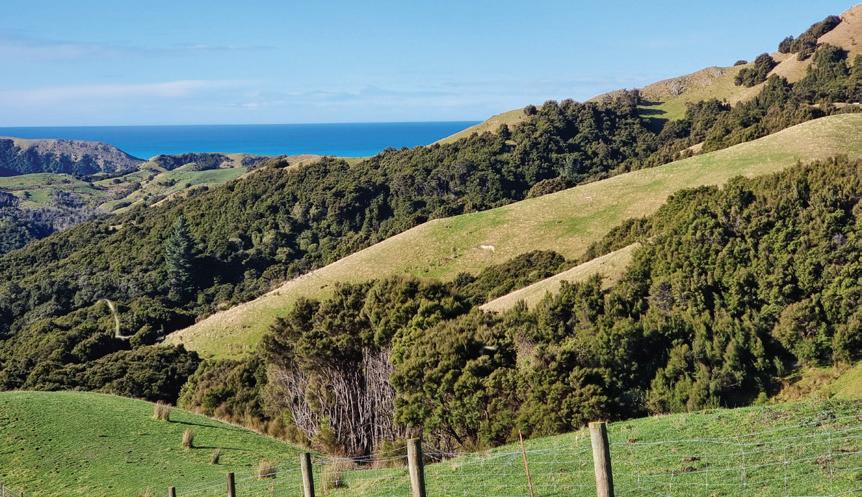

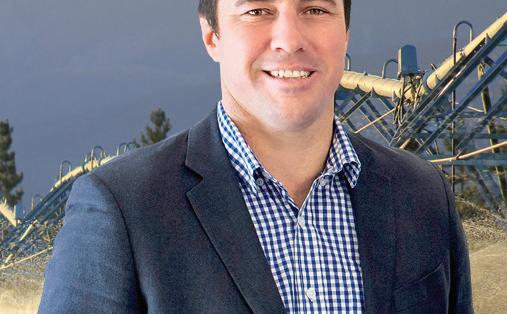
Canterbury spring sales performance (July to November) has held up very well with 14 farms sold for $68m, including two quality dairy listings. Total Canterbury rural sales (REINZ) for the same period, equals 33 rural sales (20ha +) for $146m, being approximately 50% back on the same time last season.



Importantly, nobody here is claiming victory; we will claim the depth of our buyers, both regionally and nationally, and our ability and experience at getting parties to the table. No matter the headwinds, political or economic, in any market there are always willing buyers and willing sellers; farmers and growers are pragmatic, particularly if they have all the relevant information in front of them.
Why do some buyers choose to step up while others step back? We attribute a lot of that sentiment to all the negative chat in the market on just about anything to do with our primary sector. The reality is very different when you look at the contribution agriculture makes to New Zealand export receipts and the growth in these earnings year on year.
The latest MPI Situation and Outlook Report for December 2022, highlights the value our primary sector is making to NZ Inc. Food and fibre sector, as export revenue grew by 11% to $53 billion in the year to 30 June 2022.
The sector has continued to perform well despite domestic and international challenges. Export revenue is again forecast to increase by 4% to a record high of $55 billion by 30 June 2023, underpinned by a favourable NZ dollar.
If this year’s forecast is achieved, our primary sector contribution will be up 15% for the last two seasons combined, led by pastoral farmers.
So going against much of the rhetoric directed at our Dairy and Sheep and Beef sectors, here as some real numbers on the current MPI forecast to 30 June 2023.
1. Our Dairy sector export contribution is forecast to equal $23.3 billion by 30 June 2023, up $6.7 billion from 2018
2. Meat and Wool exports are forecast to equal $12.4 billion by 30 June 2023, up $2.8 billion from 2018
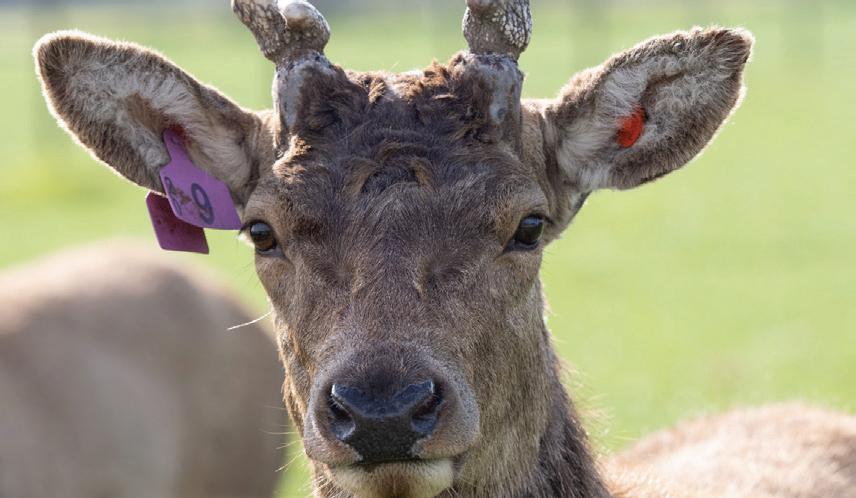
The forestry sector makes a big contribution to the national economy and recent government announcements to double earnings by 2030 are acknowledged, however the reality is, for the last six years, national forestry export receipts have been flat at best ($6b+).
So, before we all believe forestry is a one-way bet, our pastoral farmers have sound economic reasons to back their industry too, the sector has defied all the naysayers since the 1980s, and this next decade will be the same. If this year’s MPI forecast is achieved, our primary sector contribution will be up 15% for the last two seasons combined, led by pastoral farmers.
While innovation and adaptation remain central to the sector’s future, including accurately monitoring the contribution to the carbon footprint, there might also come a day when consumers share that responsibility, too, as many of the discretionary things we consume have little to do with food and shelter. You only need to look at the ever-increasing size of NZ’s airport car parks to get a measure of that.
Gareth Cox, Canterbury Rural Manager gareth@pb.co.nz
20 January 2023 CANTERBURY FARMING Property Brokers Ltd Licensed REAA 2008 | 0800 367 5263 | pb.co.nz
956 Christys Road, Ashburton 22 Hazelburn Road, Pleasant Point 267 Leeston Road, Irwell, Selwyn 114 Elgin Road, Ashburton 214 ha 156 ha 142 ha 30 ha 630 Hundalee Road, Cheviot, Hurunui 201 ha 300 Milnes Road, Hororata, Selwyn 58 ha Our true team delivers results A selection of our current season’s sales. To achieve the best result for your property call 0800 367 5263 or visit pb.co.nz PB065311
Tips before you start contracting
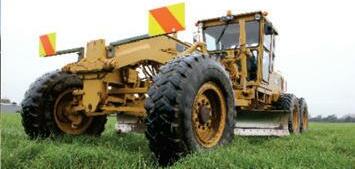









It’s a common mistake to assume what you’ll earn in a year simply by looking at your contract rate, eg $75 per hour X 8 hours a day X 5 days a week X 52 weeks a year = annual income of $156,000. There are several costs to include first, eg covering your own sick leave and ACC.


If you’re contracting, you may have to get used to unplanned gaps between the end of one contract and the start of another. If your skills are in demand, you can take advantage of these gaps by turning them into holidays. However, it’s normal to want to have continuous work — and get stressed when you don’t have it.
— and won’t get paid. Make sure you include this in your budget and when working out hourly rates.





As a contractor, you don’t get paid for public holidays that you don’t work. Make sure you include this in your budget and when working out hourly rates.


It’s important you set a realistic hourly rate for your contract work. It needs to cover all your expenses and hidden costs, eg sick leave and public holidays.
If you set your rate too high it could put off future clients. Setting it too low could leave you out of pocket.
Some people become contractors out of choice, eg to use their skills to earn more than they could in a salaried job. Others do it because they find themselves out of permanent salaried work, eg after being made redundant.


If you’re contracting, you can choose to be a sole trader or start a company. There are pros and cons to each option, so it pays to understand what each would mean for you.

Keep alert when working for any clues to what will happen with your contract. You should start looking for more work at least a month before your contract is due to end.


To give yourself peace of mind, save a buffer of up to three months’ income in case of unplanned breaks between contracts.
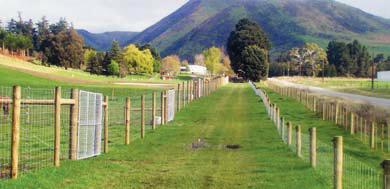
As a contractor, you don’t get paid sick leave. It’s a good idea to budget for at least five days a year when you’re too sick to work
If you are going to work from home and need to set up and equip an office, you can claim back these costs as tax expenses.

CANTERBURY FARMING January 2023 21 Locally owned and operated • Farm Maintenance • Irrigation • Dairy Shed E uent • Lime capping • Laneways • Treework • Longreach digger • Utility Detection Service • Mulching • Hiab • Shingle Supplies • Directional Drilling • AND MUCH MORE! Call us today for an obligation free quote 0800 432 583 Posts & Strainers Oamaru 434 8658 Timaru 688 2464 Ashburton 308 5304 Against attack from insects & fungi We recommend that you use proven high strength Southern Tough posts Generously Sized. Guaranteed. Processed locally. Competitively priced. Place your order with our experienced team now ] Article supplied by ] Ministry of Business, Innovation ] and Employment Here’s some tips, information and common mistakes to help you decide if going contracting is for you. Being a contractor means you:
self-employed
• are
work you do
–
your work
• choose what
• choose how – and sometimes where
to do
paying your tax
• are responsible for
are many benefits to working as a contractor — it can pay better than doing a similar salaried job and be more flexible. But there are hidden costs to think about, too.
There
‘
It’s important you set a realistic hourly rate for your contract work. It needs to cover all your expenses and hidden costs, eg sick leave and public holidays.
Graduate scheme attracts new vets to rural areas

 by Kent Caddick
by Kent Caddick

Acting Agriculture and Rural Communities Minister Meka Whaitiri said each recipient will receive funding of $55,000 over five years to kick-start their careers and help to ease the shortage of veterinarians working with production animals in the regions.


“The Voluntary Bonding Scheme incentivises vets to take up positions in our more remote regions,” Whaitiri said.





“Since its inception in 2009, the VBS has supported 416 graduate vets from the top of the North Island to the bottom of the South, providing certainty for students and vital skills for our rural communities.
“We need these vets to provide the best care for production animals, such as cows, sheep and pigs, and working dogs that are so essential in our food and fibre sector.”
The programme is delivered by the Ministry for Primary Industries. Eight of this year’s recipients will be placed in Waikato, while Canterbury (5), Manawatu-Whanganui, Southland, Taranaki, Otago, Auckland, Bay of Plenty and Hawke’s Bay will also benefit from an influx of graduates.
“Vets are vital members of our rural communities, and many graduates who have taken up the scheme enjoy the lifestyle these locations offer,” Whaitiri said.





“From Waimauku north of Auckland to Winton in the deep south, this year’s graduates will play a crucial role in helping our farmers with production and animal welfare.
“The VBS is just one of the programmes the Government is investing in to ensure our farmers have access to high quality, professional veterinary services and help rural communities to continue to thrive,” she said.

22 January 2023 CANTERBURY FARMING Pole Sheds & Hybrid Pole Sheds! Hybrid sheds mix timber and steel components. 9.0 wide bays no problems! Clear span no issues! Selw yn 15 Station Street, Leeston 7632 Phone: 03 324 3385 Email:info@buildlinkselwyn.co.nz 133A King Street, Kensington 7910 Phone: 03 688 4944 Selw yn Timaru Email:timaru@buildlink.co.nz www.buildlinkselwyn.co.nz www.buildlinktimaru.co.nz
]
Thirty-two graduate vets will begin their careers in rural New Zealand, thanks to a financial boost from the Government’s Voluntary Bonding Scheme for Veterinarians (VBS).
Vet boost: Over 30 new vets will be out working in the rural areas of new Zealand thanks to the Government’s Voluntary Bonding Scheme for Veterinarians.
Photo supplied by Vet South
Keeping it secure over the Summer


Properties in rural areas are often easy targets for thieves particularly over the holiday period, and criminals like easy pickings, so don’t make it easy for them.
by
Kent Caddick
Investing in a security system, which can send alerts to cell phones, is proving popular but in rural areas where cell coverage is not always optimum, and response times due to distance can often be long, it is not always an option in terms of deterring thieves.
Avoid leaving ‘starter kits’ for young criminals. These are items like chainsaws and mowers that can be easily taken and quickly sold.


Thieves often survey properties from afar before approaching, so be aware of strange vehicles parked within sight of your place. They also like to drive in to see what security systems you have and the state of doors and windows.
Criminals don’t like walking as they may be more easily seen. So a locked gate (with a good quality lock) is the first defence, despite it being inconvenient for you. Ensure the gate cannot be lifted off its hinges by reversing the top gudgeon.
Record the vehicle numbers of anyone coming to your property with weak excuses such as looking for a named person, or a lost dog. Keep your digital camera handy and photograph them leaving, without them seeing if possible.
An electronic gate with codes for approved users is a more expensive but very effective alternative. An electronic gate sensor on an open gate to is another option to let you know when you have company.


So many people are burgled when they are home eg when mowing lawns, so lock your door when in the garden or out on the property.


Have an alarm on the house and sheds. Even if you are a long way from town, the criminals will not know how long they have to operate before help arrives but remember they may do a test run first and come back later.
Be concerned if they go through the house and take nothing. They could be coming back, especially if they took your spare set of
keys clearly named on an obvious hook in the kitchen. Hide spare keys.
Criminals don’t like barking dogs, but be careful and comply with the Dog Control Act regarding containment of the animal.
Arrange an effective neighbourhood watch system with those around you. Letting neighbours know when you are away is so important so they can notice anything odd. Have a ‘telephone tree’ system of calling neighbours to alert others if there are problems.

Make a record (list, photos and video) of as much of your house contents and farm gear as possible – certainly the big and valuable items. Keep receipts for everything of value purchased as most insurance companies require this for claims. Mark or engrave all items with your name or phone number and make it obvious wherever possible.

Try to limit how much fuel you keep on your property as thieves can always find some way to cut pipes even if the fillers are locked.


Don’t leave keys in vehicles and bikes at nights or when you go out and lock all doors and windows when you go out. Often this is only a minor deterrent as they are easily broken. Deadlocks are a good idea so thieves cannot get doors open to remove large items.
Don’t leave garden tools like spades and axes, and especially ladders around the outside of the house when you are not there.

Always tell the police if you have been burgled even if not much is taken as even if they cannot do much, it all adds to their information database.
Don’t put your name on the gate or let-
terbox as criminals look you up in the phone book to see if you are home. Don’t say on your recorded message ‘sorry we are out’ as that’s an invitation to be visited. Say that you are ‘unavailable’ or ‘cannot come to the phone’.

Lock it up: never leave keys in vehicles and lock your garage.

CANTERBURY FARMING January 2023 23 • Driveways • Earthquake Repairs • New Home Specialists • Patios & Paths
]
Claims bungling will cost forest owners millions

 ] by Kent Caddick
] by Kent Caddick
That’s according to National’s Forestry spokesperson Ian McKelvie.

“In October, the Ministry of Primary Industries sent an email to foresters announcing that they were moving the effective deadline to register forests for the Emissions Trading Scheme from the last day of the year to 25 October 2022, simply due to long processing times in their office,” McKelvie said.


“This left forest owners just three working days to submit their applications. After that date has passed, their applications will not be processed until 2023. This change will prevent some forest owners from claiming five years’ worth of backdated credits to 2018.”
McKelvie said some forest owners stand to lose millions of dollars as a result of this poorly communicated change.
“An owner of a large native forest in the South Island claims he will lose $6million to $8 million. This is more than just incompetence, it is theft.
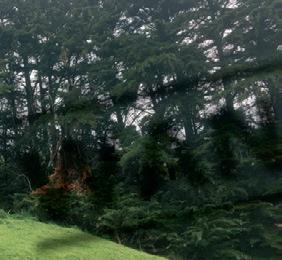


“Newly revealed information shows processing times to register a forest in the ETS have more than doubled in the last five years, while staff numbers have also doubled in the same period.”

He said foresters should not be punished because of mismanagement and a lack of leadership from the Government.
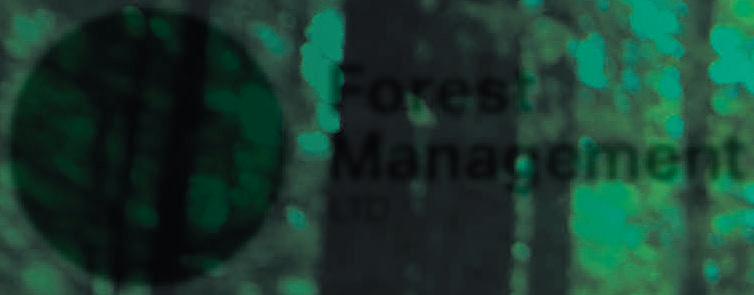
“It is crucial that landowners who planted their native and exotic trees in good faith are treated fairly. It is not good enough that foresters had almost no notice to submit their applications and stand to lose millions, simply because MPI aren’t prepared.


“To maintain confidence in the ETS, the Government must honour the commitment to issue backdated credits for the current return period.
“The Government should direct MPI to allow forests with backdated credits that apply in 2022 to be registered in the same year,” McKelvie said.
24 January 2023 CANTERBURY FARMING FORESTRY & LOGGING Forest Management LTD With 25 years experience in the industry, the Forest Management Team offer services in: • Woodlot and shelterbelt harvesting • Timber sales to domestic and export markets • Forest establishment of harvested and greenfield sites • Forest valuation • Emission Trading Scheme advice and management • Trainer/Assessor in NZQA forestry related units Our highly experienced teams aim to ensure value optimisation in all aspects of forest management. To find out more call us on 03 343 4101 or visit www.forestmanagement.co.nz 021 325 661 21 Manion Road, Rolleston www.macrocarpasupplies.co.nz SUPPLIES LIMITED PHONE KENT ON Your Old Macrocarpa Trees Do you have a stand of trees? Would you like these removed? We can offer you competitive rates and cash in return! WANTED!
Some foresters could be millions of dollars out of pocket due to a poorly communicated change in application deadlines.
Prospect: national’s Forestry spokesperson Ian McKelvie claims foresters could be millions of dollars out of pocket due to a poorly communicated change in application deadlines.
‘
It is not good enough that foresters had almost no notice to submit their applications and stand to lose millions.
Ian McKelvie National’s Forestry spokesperson
Domestic scene off-the-boil
A review of the domestic sawmilling scene very much confirms lumber sales are off the boil. In fact, most spoken to paint a picture of reduced sales and lumber prices now a common talking point for all the wrong reasons from a forest grower perspective.

Recent news of the Eaves Valley Sawmill in Nelson having a one month plus shut down is another sign of a domestic lumber scene firmly coming off the boil.

But direct competitors are quite happy there is effectively 1000+ cubic metres per day of 100 x 50 framing lumber not entering a now constrained NZ housing market.
As I suspected back in the middle of the year, when lumber usage in NZ looked like Christmas had come early, sawmill order books were dominated by some or the larger end users scatter gunning orders to see who could supply first.
As soon as new house starts began to slow, orders were being filled and what looked like a busy as for the foreseeable, changed in to an oops. Now some sawmills owners are sitting eagerly waiting for the new order phone to ring.
Alas it looks like it might be time to consider more leisurely past times including giving the boat a hose down and see if it still works.
In China, relaxation announcements by the Government around 10th December of a change in Covid management strategy has bought more positivity to the market, and an amazing turn of events with the China boss effectively bowing to the will of the people.
Folks, do not under estimate the impact of what happened there. For a country that

lives under a rule absolute leadership structure, where the boss is the boss and not to be challenged, to see policy shifts based on a clearly unhappy populace is a major cultural shift. In my view this is another example of how cell phones can move mountains.

At the same time, the China Government has announced a staggering suite of economic stimulus packages with a focus on bad debt retirement.
A, lets wipe the slate clean, stroke of the pen wiping close to NZ$650billion off finance sector overdrafts, signals a pretty significant shift in economic stimulus. Thus far, we don’t see infrastructure investment being announced, but most believe that will be a component of stage two.
The net consequence of these major changes has lifted the mood of the softwood market with most commentators suggesting the scene is set for a much more positive Q1 2023.













At present we are seeing daily usage rates across the eastern seaboard stick stubbornly around the 60,000 cubic metres per day. But I have commented to many, for a country that has had 11 of its largest cities under a strict COVID lockdown regime, that much lumber being consumed every day but Sunday is not too shabby.
Erstwhile shipping companies, the poor soles (not) continue to scour the planet to

New floors for dairy farms
Peter Lansdaal anticipates a whole new industry is going to be needed to supply dairy farmers with wood chips for calf bedding and cow stand-off and loafing pads.



And at the same time, dairy companies want the same wood chip, or wood pellets, for their milk powder driers.
Peter likes wood chip in his calf shed for his Jersey

calves. The chip is natural, locally available, keeps the calves dry, and makes a great fertiliser afterwards when the calves move off to life on the pasture.
He trucks in up to 200 cubic metres of chip each year to make his precious new-born calves comfortable.
The sawmill, of course, saves the best logs for timber.



find cargoes which remain insufficient to allow them to be busy. This, combined with continuing reductions in oil prices is giving them little leverage at the daily hire rate negotiating table.

The easing of shipping rates has slowed but remains sufficient to ensure NZ forest growers still get a reasonable price at the wharf gate NZ.

In China the air of positivity has seen CFR prices halt their recent slide with some commentator’s suggesting potential price increase for January/February sales. The key here will be to ensure shipping companies do not line up for a slice of the action.
Meanwhile the NZ dollar has responded to a weaker US$ keeping importers happier but exporters frowning.

Rather strange don’t you think, that prices at the NZ fuel pump remain stubbornly high despite about an 8% tick up in exchange rate.
To our many readers welcome to 2023. Don’t let the sods get you down. Living in Godzone is still a privilege.

As always People, please remember the thoroughly important message, “it remains, as always, fundamentally important, the only way forward for climate, country and the planet, is to get out there and plant more trees”.


CANTERBURY FARMING January 2023 25 FORESTRY & LOGGING ] with allan Laurie MnZIF ] Laurie Forestry Ltd Office: Phone 03 359 5000 Email: admin@laurieforestry.co.nz Unit 3 337 Harewood Road Bishopdale Christchurch 22 Shearman Street Waimate Phone 03 689 8333 • Cell: 027 432 1420 See our website for information including Market Reports and Log Price Tables www.laurieforestry.co.nz FORESTRY SERVICES - CONSULTING - MANAGEMENT - MARKETING Specialists in: •Woodlot and Forest harvest - at any scale •Direct log sales in both domestic and export segments •Top quality H&S systems and management •Forest right or cutting right purchases •Planting and silviculture management •Top advice, top people, top service Laurie Forestry Ltd Harvesting & Marketing, Consultants & Managers THE PEOPLE AND THEIR TREES COMPANY www.laurieforestry.co.nz
PETER LANSDAAL
Dairy Farmer | Waharoa
www.woodourlowcarbonfuture.nz
International judges welcomed back to NZDE
by Dianna Malcolm
New Zealand Dairy Event (NZDE) organisers are excited to finally be able to throw open their doors after being forced to cancel the show two of the last four years.
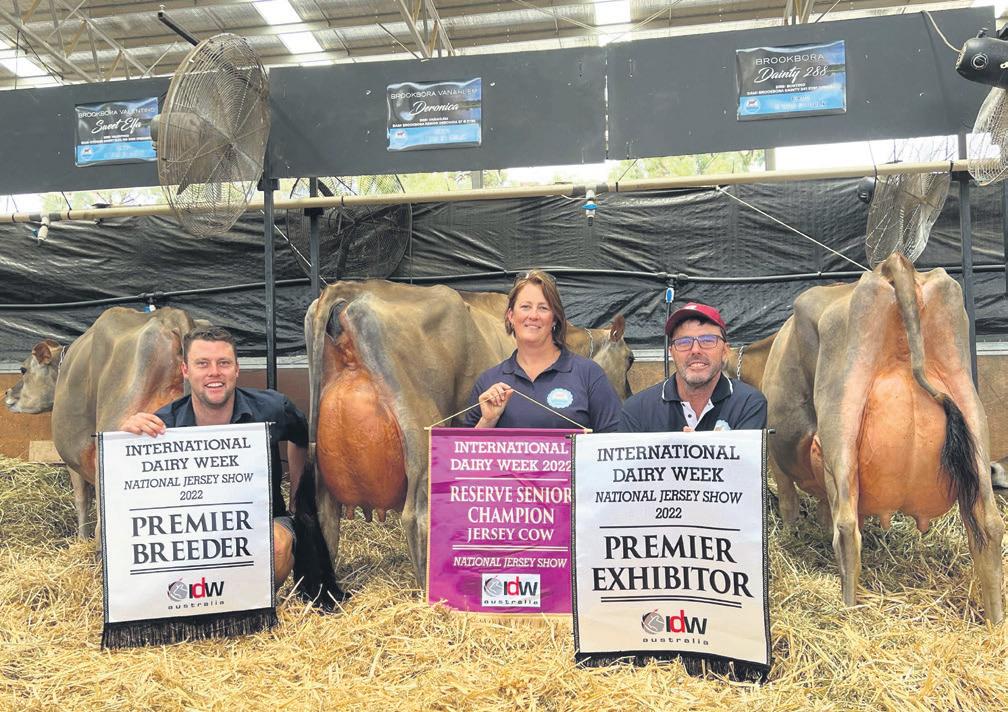

It was cancelled in 2019 and 2020 because of Mycoplasma Bovis, and in 2022 organisers had a tough time navigating Covid-19 in 2022. They had to limit entries, and no internationals could attend.
This year it will be business as usual, and in addition to the international judges, there will a number of international cattle fitters in the mix as everyone moves towards their preparations.
The judges are led off by the Holstein judge Mark Nutsford, who is one of the UK’s highest profile breeders .
Mark and his wife, Susan, own and operate 250-head at Riverdane Holsteins, in addition to Celltech Embryo Transfer at Cheshire (northwest England). The couple milk 100 of their high-production Holsteins through two robots with the balance being milked in a parlour. They farm 450 acres, mostly grass, maize and whole crop wheat.
Two Australian friends, colleagues and partners in cattle will judge the Jerseys and the Combined Breeds respectively.
Daniel Bacon, who milks 280 high-production Jerseys under the well-known prefix, Brookbora Jerseys, will judge the Jerseys.
Brookbora Jerseys – located on 283 hectares in Tennyson, Victoria – is Australia’s highest production herd, the reigning Premier Breeder and Premier Exhibitor herd at International Dairy Week (IDW), and the equal No. 2 Australian Jersey herd in BPI [Balanced Performance Index]. Brookbora also has the distinction of breeding more than 300 EX cows.
Bacon will be joined in the interbreed ring by his friend, Ben Govett, of Tandara Genetics, who will judge the Combined Breeds.
Govett owns a 600-hectare operation at Dingee, in northern Victoria (two hours north of Melbourne).



His 300-head herd is an even split between Brown Swiss and Holsteins with some Jerseys and whatever other breed Ben may have on-board as a favour to someone.
The fourth international is South African dairyman Edmund Els, who will judge the Ayrshires.
Els owns The Ridge Ayrshires, milking 200 registered Ayrshires on the Western Cape. He is equally comfortable showing cows, having exhibited and bred several national champions, as he is working in official roles at the highest levels for the breed. He is the World
Ayrshire Federation’s current president.
New Zealander Gordon Fullerton will judge the youth show. The 25-year-old sharemilker is milking 300-head in his second season for well-known Waikato dairyman Henk Smit. The Maungatautari operation in picturesque Cambridge is 70% autumn calving.

new Zealander Gordon Fullerton, seen here with the EX96 Holstein, Butz-Butler Gold Barbara, who was the 2019 Grand Champion Holstein at World Dairy Expo in Wisconsin,
of
26 January 2023 CANTERBURY FARMING DAIRY Four Peaks Hoof Trimming hooftrimming.co.nz︱info@hooftrimming.co.nz Their hooves carry your milk. Problem with lameness? Give us a call today! 021 0343091 IDEAL HOME OR INVESTMENT FIXED-PRICE PREFAB HOMES! Would you love a new home or investment property?
the time to buy one a 3 bedroom, 1 bathroom with separate toilet 98m2 home from our popular Value range. Be quick, these stock homes are under construction with fixed-price contracts and won’t last long!
homes are designed to meet 2023 H1 requirements.
a plan catalog including pricing today, visit laing.co.nz
our Sales Consultants today on 03 3494977 or simply email us on info@laing.co.nz Showhome Open weekdays 9am - 5pm or by appointment 15 Hanworth Avenue, Sockburn, Christchurch www.laing.co.nz
Now’s
These
Download
Contact
]
New Zealand’s premier dairy show will welcome four international judges from three countries to its Manfeild Park Stadium at Feilding from January 24-26.
Daniel Bacon (left) with his parents, Sandra and robert, in January this year after winning Premier Breeder and Premier Jersey Exhibitor at International Dairy Week in Victoria, Australia. Photo: Jayden Drake
will join a group
international judges at the new Zealand Dairy Event this month.
Photo: Terri Packard
] with Peter Burton
There are two issues at play here. Firstly, clover fixes nitrogen in response to declining plant available levels in the soil.
Work at Ruakura Research Station showed that less N was fixed by clover as increasing amounts of synthetic N were applied.
Clover may be present but is it fixing? Only examination of the roots will provide that information.
A healthy plant at this time of the year will have strings of plump nodules which when cracked open with a fingernail contain a sticky red substance, a clear indication of nitrogen being fixed.
A healthy well-structured soil with a 25% by weight clover content is capable of providing enough nitrogen for 18,000 to 20,000kg of DM per hectare in a twelve-month period.
And where carbon is being steadily sequestered any excess nitrogen will be stored and not lost to groundwater.
It is under intensive grazed pasture, without reliance on synthetic nitrogen, that carbon is most readily sequestered and should therefore be encouraged in sensitive water catchment areas, not excluded.
Landcare Research work has shown that irrigated pasture throughout the country is losing carbon. In our view it’s not water that is the reason for that loss.
When dry-land pastures are first irrigated new species are sown along with an application of synthetic N.

With large amounts of carbon resulting from years of sympathetic farming the extra growth from synthetic nitrogen is impressive.
Applied nitrogen burns soil carbon, however a single application has little impact. It’s
regular applications of nitrogen that results in the steady depletion of soil organic matter.

Secondly, removing any nutrient, nitrogen is a nutrient, from an existing programme without replacing it energetically will result in less growth.

Unless other tests are specifically requested a soil test measures only what is plant available nutrient, usually somewhere between 1% to 5% of the total soil held nutrient.
It is however valuable information and particularly so when part of a comprehensive testing programme over time.


To make sense of a single test result it is essential to have information on both the physical state of the soil and historical fertiliser inputs.
Soil moisture and temperature influence how quickly nutrient from dung, urine, and decaying root becomes available. With soils ideally 25% air and 25% moisture the amount of crumb in the soil is therefore a key component.

The excellent Visual Soil Assessment process provides not only information on this aspect of soil health but also a clear indication of carbon loss or gain, and with the proposed taxation of carbon loss knowing what is taking place is essential.

The incorporation of CalciZest in a nutrient programme is a way to minimise any lag effect when reducing and eventually eliminating synthetic nitrogen.


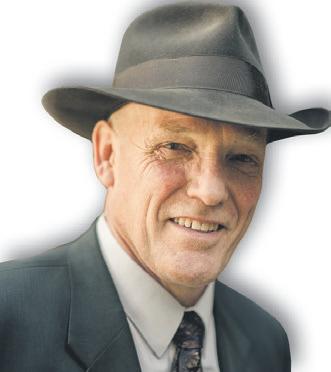

CalciZest is a product developed and made by Functional Fertiliser and successfully used by famers throughout the country for over 25 years.
It is a mix of soft carbons inoculated with a wide range of soil friendly fungi and bacteria and calcium in the form of lime.
Lime creates the environment which favours beneficial microbes, and earthworms, creating more crumb in the soil and increased nitrogen fixation by clover.
Higher calcium input is essential for disease and pest resistant clover capable of fixing all the nitrogen required for maximum pasture growth.

Clover also is the best tucker for rapidly growing animals and all lactating animals. It’s higher in energy and more digestible resulting in extra total feed being eaten each day.
Because CalciZest is quick acting, early summer is an excellent time to apply. It’s available throughout the country and spread by conventional ground spread equipment.
For further information call Peter on 0800 843 809.
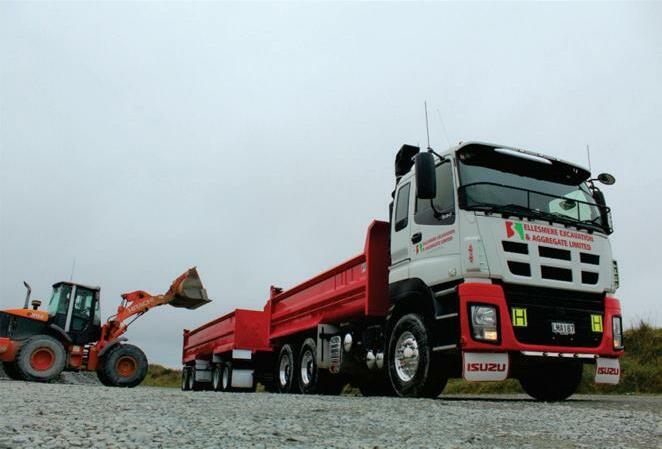


CANTERBURY FARMING January 2023 27 DAIRY
Golden Bay Dolomite NZ’s most loved magnesium. call 0800 436 566 or visit www.dolomite.co.nz nairn Electrical Electrical Problems or Maintenance? Electrical installation, maintenance and a breakdown service second to none Irrigation Farm Industrial Municipal MASTER ELECTRICIANS Member Electrical Contractors Association of NZ LEESTON Ph (03) 324 3752 RANGIORA Ph (03) 313 6104 0800 726 724 www.scorch.co.nz Terrestrial Wireless ADSL Fibre VoIP RBI GET CONNECTED WITH Scorch Broadband SCORCH COMMUNICATIONS Replacing nitrogen naturally I’ve often heard the comment, “there’s plenty of clover in my pasture but I still require nitrogen for growth.” Magnificent mixed pasture: Lime creates the environment which favours beneficial microbes, and earthworms, creating more crumb in the soil and increased nitrogen fixation by clover.
Installation tips and in-season maintenance of an irrigation system
When designing and installing a new irrigation system, it needs to fit your land, business and water restrictions. A well-designed system means efficient use of water, energy, labour and capital.
] Article supplied by DairyNZ

A new system is a major investment and should be thoroughly researched. Use a ‘Blue Tick’ accredited operator for installation work and advice.
IrrigationNZ has a range of resources to help in the design and installation of a new irrigation system. When designing a new irrigation system, consider installing a soil moisture monitoring system. This will help with irrigation scheduling and allow you to irrigate efficiently. IrrigationNZ has information on soil moisture monitoring equipment and how to install it.
When installing a new irrigation system or pump, make sure you get the performance specifications from the supplier which will be a benchmark for future checks and testing.
Failures of pumps and irrigation equipment during the season can waste a lot of time, restrict pasture growth and create stress.
Regular equipment checks and ongoing maintenance is vital in preventing breakdowns and reducing the chance of serious damage. Having a weekly or monthly and annual task list for irrigation maintenance, where you can check tasks off easily, ensures maintenance is kept up-to-date.
Below is a summary of some essential maintenance procedures for most irrigation systems. For more detail specific to your system, contact the service provider. If you install a new pump, ensure the supplier provides the specifications and a pump commissioning report. This will serve as benchmarks for future checks.
Maintenance checklist during irrigation season
At the pump:
• grease pump and motor
• check flow readings, operating pressures and amp readings to compare with initial readings or specifications.

At the irrigator:
• check sprinklers for condition, rotation, blockage, nozzles not hooked up, wear and tear
• check irrigation speed and operating pressure




• check application depth and compare against design specifications








• check hoses and pipes for damage or leaks


• follow maintenance schedule for regular greasing of travelling irrigators


• have a plan to manage travelling irrigators in high winds. This may include turning water off but keeping the irrigator filled with water; parking the irrigator behind shelter; or in the same direction as the wind to minimise the contact area. Tie down rotary booms.



Problems which occur with irrigation can range from minor issues which take time to fix, through to major problems that cost time, money and loss of pasture production (from delayed irrigation) or loss of nutrients (through over watering).
It is important that any problem is fixed quickly and the cause identified to stop it happening again.
28 January 2023 CANTERBURY FARMING WATER & IRRIGATION IRRIGATE WITH CONFIDENCE. IRRIGATION SYSTEMS REMOTE MANAGEMENT PRECISION VRI
BY LINDSAY
Check it: regular equipment checks and ongoing maintenance is vital in preventing breakdowns and reducing the chance of serious damage to your irrigation system.
Septic tanks: Out of sight, out of mind?
 ] by ross Hector
] by ross Hector
] Aqualinc


Both blackwater from the toilet and greywater from showers, sinks and laundry are disposed of via these systems.
A lot of people know very little about their systems, to the point that they are unaware of the way the systems work, the location of the discharges from their systems or (in some cases) even that they have a system.
These types of systems discharge wastewater directly to ground following primary and/or secondary treatment. In older systems the discharge is often directly into gravel trenches or boulder holes, through perforated pipe.
Newer systems have a network of pipes which discharge waste within mounded soils or into specifically designed sand and river gravel trenches which are effective barriers to microbial contamination entering the environment.
Research has shown that these types of sediments, along with soils, the unsaturated zone and aquifers are effective barriers to contamination as a result of various microbial removal processes. The sediments do not remove nitrates, which are simply diluted, in most cases, by water flowing through the aquifer system.
An “out of site out of mind” attitude towards septic tanks is common, and its root lies in the fact that visible onsite issues rarely occur. However, should a system not be functioning correctly (and recent research has shown that possibly 30% of existing sys-
tems in New Zealand may have issues), then concentrations of contaminants entering the environment, and groundwater in particular, may be more significant than expected.
This is especially concerning if systems are installed within close proximity to drinking water supply bores, as greater concentrations of microbial contaminants (bacteria and viruses) may reach the bores than would be expected.
In terms of installing new systems, the first consideration should be the location of the septic tank discharge compared with drinking water bores, and the depth of the source water bore.

In Canterbury, groundwater broadly flows


from the Southern Alps to the coast and loosely parallel to the region’s rivers. Placement of septic tanks down gradient of drinking water bores is recommended. If this is not possible, then maximising the distance between the bore and the discharge location (both laterally and vertically) is important.
New systems are only being consented after a thorough investigation into the poten-

tial effects of the system on the environment and drinking water sources.


This may require a site survey to assess the suitability of the discharge location, including both above and below ground characteristics (soil, unsaturated and saturated zones) to assess the potential of these sediments to act as barriers to contamination, and therefore the suitability of the site for the proposed system.
If a proposed system is in an area where there is a public supply bore, or in an area where nitrate concentrations are already elevated, then the level of scrutiny will be higher than for areas where there is less concern about impacts.
Once in place, regular servicing of systems is recommended. System providers will often have recommended servicing regimes to maintain the effectiveness of systems, and these should be seen as necessary, not optional. Any obvious ponding of effluent at the land surface needs to be addressed promptly.

There are many septic tank systems out there, and the overall cumulative effect is somewhat unknown. To protect human health and the environment, it’s important to ensure that your system is working effectively and is located optimally.

T H E S Y S T E M I N C L U D E S :
T h e l a r g e s t s o i l s a m p l e r e f e r e n c e a r e a o n t h e m a r k e t t o d a y ( 6 l t r s o r 3 7 0 c u b i c i n c h e s ) .
H i g h l y s e n s i t i v e T D T t e c h n o l o g y t h a t i s h i g h l y a c c u r a t e i n a l l s o i l c o n d i t i o n s

M u l t i p l e i n s t a l l a t i o n m e t h o d s t o c a p t u r e t h e r i g h t d a t a U n i q u e l y a d a p t a b l e t o d i f f e r e n t c r o p p i n g , o r c h a r d , v i n e , a n d i r r i g a t i o n s y s t e m s t y p e s
T h e l o n g e s t s e r v i n g i n s i t u s e n s o r i n N e w Z e a l a n d ( O u r o l d e s t A q u a f l e x i s 2 0 y r s o l d a n d g o i n g s t r o n g )
CANTERBURY FARMING January 2023 29 WATER & IRRIGATION
www.onfarmdata.com Andrew: 022 183 2018 Lyall: 021 223 8666 andrew@onfarmdata com lyall@onfarmdata com
It’s common for rural landowners to dispose of wastewater via septic tanks or similar wastewater treatment systems, largely due to the distance to reticulated wastewater networks in rural locations.
A septic system has two main components: the septic tank and the drainfield.
Challenging season ahead
for the 2023-24 season but more likely for 2024-25. However, the cost-benefit of these is yet to be proven.
]
by andrew Curtis
] Primary Insight



La Niña weather patterns always make for more challenging irrigation seasons due to more frequent rain events, warmer temperatures, but fewer ‘hot-days’.


They are the seasons when you receive the biggest payback from closely monitoring your irrigation scheduling, which also minimises the risk of nutrient leaching.
Given this we thought it would be useful to touch on the current available options to monitor soil nitrogen and the challenges and opportunities of these.
There are a couple of proven commercial sensors on the market that can measure Volumetric Ion Content (VIC) and/or Electrical Conductivity (EC) of the soil. While these sensors cannot directly provide a direct measurement of the concentration of nitrate and ammonium ions in the soil, they can be calibrated to provide a measure of overall soil fertility, the distribution of nutrients down the soil profile, and therefore an indication of soil nutrient leaching events.
An example of this would the Sentek TriSCAN soil moisture probe that is widely used overseas in orchards and vegetable crops for this purpose. Primary Insight is currently in the process of calibrating this sensor for the common Canterbury soils.

There are some promising new soil nitrogen sensor technologies nearing commercialisation that will potentially become available

Regardless of whether soil nitrogen sensors appear on the market in the future or not, one key consideration is how useful will they be? We have doubts around their value in a grazed pasture scenario due to the ‘urine patch effect’.
A North Island study that looked at the number of sampling points required to get a representative leaching value under dairy pasture using drainage flux meters (small lysimeters) came up with the answer of ‘lots’ due to soil and urine patch spatial variability.

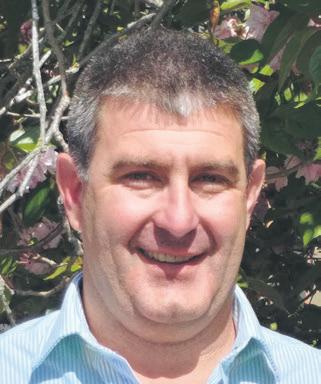
Given this, installing a single point sensor in a paddock will not be that useful, unless cows can be taught to strategically urinate around the sensor! In the case of cropping, while there are less variables at play, a single sensor will still likely be challenging to obtain useful data from.
Where these sensors potentially have application is in conjunction with remote sensing, ground-truthing hyperspectral imagery.
Remote sensing will be the way forward for obtaining more frequent measurement of soil nitrogen. However, until reliable, costeffective, and user-friendly remote sensing technologies appear on the market, the best way to get a measurement of soil nitrate levels is still to take a soil test, and supplement this with the quick-N test during the growing season, obviously ensuring you follow the soil sampling protocols for both.
The team at Primary Insight would like to wish all irrigators a Happy Christmas and look forward to working with you in 2023.


30 January 2023 CANTERBURY FARMING WATER & IRRIGATION
The NIWA climate outlook indicates that we will continue with the La Niña weather pattern for the rest of the summer.
Water security and the future of farming
 by Stephen Mcnally
by Stephen Mcnally
IrrigationNZ



] Principal Technical Advisor








Dr Tait spoke about his research on climate change impacts and implications, particularly some innovations in spatial modelling of climate features, such as droughts and rainfall patterns.
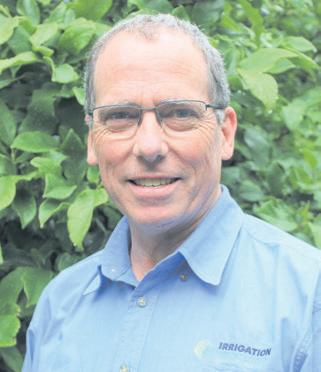
There is some fantastic scientific data gathering and interpretation work being undertaken in New Zealand relating to our weather and climate issues that farmers and growers need to pay attention to.
I had a few takeaway messages from the presentation that nicely align with the work IrrigationNZ does in the area of freshwater policy and best practice guidance.
It is inescapable that regardless of which global climate change model is adopted that some of New Zealand’s traditional food-producing regions will be getting gradually drier on average in the summer.
They will also face more frequent and extreme weather conditions such as floods and droughts.

Water supply security through the capture and storage of off-season rainfall will be a core part of adaptation within our food

supply chain resilience.



IrrigationNZ is currently part of a primary sector working group collaborating with MBIE as it advises the government on how best to support our scientists in their research and the need for a strategic plan that focuses on fundamental issues that need to be communicated better to our general population and in particular our farmers and growers.
IrrigationNZ has engaged in several highly informative discussions with Te Waihanga the New Zealand Infrastructure Commission arising from their role in drafting the infrastructure chapter of the National Adaptation Plan.

One particular point of discussion is the concept of looking at acknowledging irrigation infrastructure in a critical irrigation lifeline categorisation for future risk planning.
This could help force more positive consideration of irrigation of long-term national and community level risk, resilience, and adaptation to climate change, as well as extreme events such as floods and seismic activity.
We have also been regularly engaging with the newly formed Water Availability and Security team based at Ministry for Primary Industries.
Work is underway identifying the critical elements of their work program to deliver on the recommendations of the October 2021 water availably and security report, essentially to establish a focused water strategy for New Zealand that takes into account multiple water users across our regions facing increasing pressures from climate change.
The water availability and security program is one of the initiatives highlighted under the priority actions of the National Climate Adaptation Plan.
While Dr Tait focused his presentation and web-based app examples specific to the rural advisors and farmers present from the Wairarapa, it was fascinating to see how the climate data and projections would relate across other parts of New Zealand’s irrigated farming and growing districts.
The NIWA data presentation tools are freely available online and I recommend you take some time to have a look at what they can tell you about the short and long-term impacts on your operation.

The data can help show you what has been happening within your location with some powerful predictive tools show what might occur in the current season with the likelihood of droughts occurring and even
longer-term what climate change might look like in a few decade’s time.
I’d recommend you have a look at what this sort of information service can contribute to your decision processes and add it to your local knowledge and site-specific observations.
When you are looking at longer-term business planning and resilience, take the time to think about climate impacts on things such as water storage, irrigation system capacity, and what your land use type will be like in the next few decades.
CANTERBURY FARMING January 2023 31 WATER & IRRIGATION FOR ALL YOUR WATER WELL DRILLING & WELL SERVICING REQUIREMENTS Submersible Pump Installation & Removal Potable Water Testing Pump Testing FOR PROFESSIONAL SERVICE FROM AN EXPERIENCED TEAM Rural Water Supply Lifestyle Block Supply Ph - 027 222 1587 / Email - Malcolm@hydrill.co.nz ]
]
I recently attended a very interesting meeting where the guest speaker was Dr Andrew Tait the Chief Scientist of Climate, Atmosphere, and Hazards at NIWA.
‘Take the time to think about climate impacts and what your land use type will be like in the next few decades.
Call for Government to push pause on environmental policies
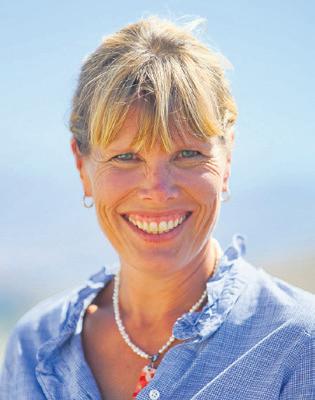
Despite facing a barrage of poorly considered Government regulations and soaring costs, they have continued to produce the world’s most carbon-efficient red meat and generate vital export returns as New Zealand slowly recovers from the impacts of the Covid-19 pandemic.
It was one of the few sectors that propped the economy up over the height of pandemic, yet this Government has “rewarded” our farmers with a tsunami of environmental policies that threaten the viability of our sector and our rural communities.
We are not against policies that achieve the desired environmental outcomes and reward good farming practices, but we are not seeing any of these. Instead, we are having policies foisted upon us that are often unworkable with no environmental benefits. The pace has meant that policies are frequently needing to be re-worked.
The Winter Grazing regulations are a good example. The Government largely ignored feedback and enforced rules despite not having all the management instruments in place, namely the Government’s Freshwater Farm Plans.
This means that thousands of farmers are now required to apply for a costly resource consent, despite the overwhelming evidence from Regional Councils showing that winter grazing practices have improved significantly over recent years.


This is due to farmers taking ownership of the issue and adjusting their management practices accordingly, regardless of any Government regulations.
Along with other farming organisations and NGOs such as Forest & Bird, Fish & Game, the Environmental Defence Society


and the Climate Change Commission, B+LNZ has repeatedly called for urgent limits to be placed on forestry offsets in the Emissions Trading Scheme.
It is heartbreaking to see productive farmland being sold to industrial polluters wanting to offset their carbon emissions rather than reduce them. The only winners are the polluters, as unlike farmland, wholesale pine forests support neither biodiversity nor rural communities and represent significant fire risks in the future. How will this benefit the climate?
The National Policy Statement for Indigenous Biodiversity was another case in point of this Government’s rushed policies. Leading biodiversity experts such as Professor David Norton agree that the definition of a Significant Natural Area is much broader than it needs to be, tying up productive land in red tape and compliance with no benefit to our natural biodiversity. At time of writing we were expecting a decision, but we don’t know whether they’ve started listening to feedback.
Remember that 2.5m hectares of this country’s native vegetation sits on sheep and beef farms and this includes 1.4m ha of native forest.
There are 4,503 QE11 covenants protecting 180,000ha of native biodiversity on this country’s farms and this shows show seriously farmers take the long-term protection of biodiversity.

As we enter a new year, my plea to the Government is to push pause, think hard about what it is trying to achieve and stop biting the hand that feeds it.

We all want to address climate change and protect our freshwater resources and native biodiversity. Our farmers have proven time and again that they are the world’s most efficient producers of red meat while protecting and enhancing their natural resources. They should be rewarded and encouraged, not vilified.
While it has been a tough year, I encourage you all to be proud of the work you do and take time to cherish the people in your life.
32 January 2023 CANTERBURY FARMING LIVESTOCK DP0122 Benchmarked production and Johne’s disease info on your deer Base your deer management decisions on the numbers. Contact DeerPRO for your report. 0800 456 453 or info@deerpro.org.nz 2018 70 65 60 55 50 45 Season Carcass weight 2019 2020 2021 2023 2022 ] by nicky Hyslop ] Beef + Lamb New Zealand Director
The past 12 months have been particularly challenging for our farmers. Keep an eye out for improved pastures. Quality aglime comes down to particle size and moisture content. Talk to us today about how our lime can make a difference on your farm. 0800 303 980 • www.palmerresources.co.nz
New Zealand wool still best




With the return of overseas tourists to New Zealand shores after a couple of years stand down, and despite ongoing global Covid issues, there has been (almost) a feeling of normality returning to many of our top tourism locations, particularly noticeable across the South Island during the past couple of months.
Along with the return of tourists has also come the return of wool product manufacturers from various countries visiting their Kiwi based suppliers and exporters.
Representatives from several large companies who manufacture a range of products from apparel to carpet yarn have each spent time in both the South and North Islands during the past three months and all have taken away the satisfaction that New Zealand continues to produce some of the best, if not the best, wool on the planet due to the free-range nature of our farming systems, excellent animal welfare, and an abundance of fresh pasture.
Being face to face with customers is an important part of conducting business for wool exporters, in that while there is the technology for plenty of interaction via emails and/ or video conferencing, the ability to physically shake hands, make gestures, and observe body language when all parties are together in one place, forges a more amicable and trusting business relationship.
From what I can understand, all recent European wool industry visitors who source wool supply via PGG Wrightson Wool and its subsidiary, Bloch & Behrens NZ Ltd, were re-





minded of New Zealand farmer commitment to producing a first-class product as well as the absolute need for a much better financial return for wool growers.


Despite an apparent requirement for ethically produced, sustainable and traceable products, raw material price continues to be the front-of-mind topic due to an expectation of weaker consumer demand into the 202324 periods as recession bites.
From a carpet yarn perspective, the revival of domestic carpet markets across Europe during 2020-21 appear to have taken a downturn but, as the global tourism industry gently gains traction, commercial carpet requirements appear to be improving in hotel, cruise ship and airline sectors.

From an apparel perspective, there appears to be still solid demand for active wear as well as traditional woven cloth, particularly from European manufacturers in the fine wool sector.

Chinese buying interests have remained somewhat subdued as manufacturers there struggle with production due to internal health policy requirements and factory closures, although there may be a glimmer of hope for an improvement in capacity.


Wool has drawn much media coverage in

New Zealand of late with many brand-new uses touted for wool, as well as a replacement for previously synthetic products.
While every new use is fantastic for the wool industry there are always questions about what quantities are likely to be consumed as a result, and how or if those new product uses will affect wool prices to wool growers and although there have been a few financial numbers suggested as desirable to return to wool growers, and whilst we all understand that anything new takes time to establish itself, in the meantime wool growers
are disappearing at a quick rate of knots! Hopefully when these new ideas begin to require commercially viable quantities, there will still be enough wool of the necessary specification produced in New Zealand to feed such manufacturing plants.




With the recognition that New Zealand coarse wool is the best in the world, in my view it’s probably always been a “niche product” but the price received certainly hasn’t reflected that for a very long time. Surely things can only improve.
That’s my view.
CANTERBURY FARMING January 2023 33 LIVESTOCK www.sisballcock.co.nz | 0800 175 720 Only available direct from manufacturer Freight free anywhere in NZ •3 models available – all the one price • Nearly indestructible •Only NZ Manufacturer providing lifetime guarantee on the body of the ballcock SIS BALL COCK VALVE •Buy 10 receive 12 and a service kit Price $99.50+GST Each ] with rob Cochrane ] Wool Procurement Manager, ] PGG
Wrightson Wool
Subaru’s electric SUV awarded five star safety rating
The all-electric Subaru Solterra has achieved the maximum five star overall rating in the 2022 European New Car Assessment Programme (Euro NCAP) safety performance test.
] Article supplied by Subaru NZ


The Euro NCAP is an independent agency composed of European governments and European motoring and consumer organisations. The Solterra European model was used as the test vehicle.

The Euro NCAP evaluates Adult Occupant Protection, Child Occupant Protection, Vulnerable Road Users Protection and Safety Assist and the Solterra registered scores in all four assessment areas that sit above the minimum threshold required.


Notably for families, the Solterra achieved the most remarkable score in the Child Occupant Protection, with maximum score in Crash Test Performance of both frontal and lateral impact based on 6 and 10-year-old children.
Subaru of New Zealand’s Managing Director Wallis Dumper said he welcomed the five star rating but is not surprised by it.

“Our all-new electric SUV, the Solterra follows in the tyre prints of the Subaru Outback which was awarded the maximum five star safety rating from independent Australasian vehicle safety authority ANCAP, achieving record scores in 2021.
“Outback has been awarded five stars

since 2004 and in fact, our entire Subaru model line has had a five star ANCAP safety rating for many years,” Dumper said.
“Subaru specialises in core technologies that help our vehicles achieve both the Euro NCAP and ANCAP results, and these are underpinned by the engineering prowess of our Symmetrical All-Wheel Drive (AWD).
“Like all our New Zealand-new Subarus, the Solterra is All-Wheel Drive, which gives Kiwi drivers the chance to join our journey towards a more sustainable future, while retaining the greater balance and extreme control that is part and parcel of AWD,” he said.
Subaru has confirmed a 2023 arrival for the Solterra into New Zealand.
“The team here is working hard to estab-






Safety first: Subaru’s electric SuV the Solterra, which will be available in new Zealand this year, has received a five star safety rating from Euro nCaP particularly for its child occupant protection.

lish when we will have the two Solterra models on sale through our 17 Subaru authorised centres,” Dumper said.

“We recently displayed an overseas model Subaru Solterra at the New Zealand Sotheby’s International Realty Queenstown Marathon and it generated huge interest there.
“Solterra’s cruising range per charge of approximately 460km was also a popular talking point, as it allows our active Kiwi drivers to travel decent distances between charges, as they head away to their adventure hot spots.”
34 January 2023 CANTERBURY FARMING
Shipping, sunshine and stuff
Good news for the world living in huge shipping delays and ridiculous charges.
] with rob Cope-Williams
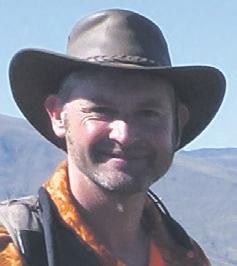


Ocean freight rates are falling sharply and on the China to the West Coast of the US route they are down by 90% compared to a year ago.
According to data from shipping and freight services the situation from a year ago has now turned completely around in that there are now plenty of ships available and too much container capacity.

One report I found even said that ships are sailing with small to no cargo loads which I suspect gives the appearance of activity even though it is uneconomic.
Hopefully that will mean the prices will not be swallowed up by the shipping costs and producers will get a decent amount for what they produce.
More to the point, imports will drop as well.
One does wonder what the powers at be in the Ivory Towers will blame the high costs on next.

I don’t think I have seen the countryside look so good this time of year, on a recent

trip to Kaikoura I was amazed at the pastures, even the road sides had grass in full flower and rampant.
That brings me to the old folks’ story about a wet or dry summer.
The cabbage trees are heavily laden with flowers which, I am told, suggests a long


hot summer, in the North, their Pohutukawa trees are also early and prolific flowering. Same promise I am told.
Thence the Canterbury forecast method and the two trees. Old homesteads will have an Ash tree and an Oak tree.
If the ash bursts into leaf first we are in for
a “dash” of rain, as in a dry one. If the oak does it first, we are in a “soak” or wet summer. Have a guess as to who broke into leaf first this spring? NIWA verses Nature.
The year 2022 was certainly an interesting one as far as the Government was concerned. What will happen in November is anyone’s guess, but whoever takes the reins will certainly have a huge job to turn the ship around.
Hopefully whoever the minister of Agriculture may be that they will listen and act on what the industry needs, and requires, to keep up production.
North pole versus south pole
Merry Christmas. Thank you for the opportunity to contribute to this fine and interesting publication each month.
] by Solis norton
Thanks also to Kelvin and his editorial team for putting up with my occasionally poor deadline management, typos, grammatical errors and the rest. I do enjoy it, almost certainly more than any gift Santa is going to appear with next week.
A regular column like this is a chance to focus. Zoom in on something that caught the attention to explore more carefully. Not only a concerted effort, more than one might usually make, but culminating in the key points noted down for future reference and the readers own interpretation.
Here’s a good example. One day last week I rather randomly had breakfast in Dunedin with John Roche and then lunch in the Catlins with a farmer friend.
John is chief science advisor at the Ministry for Primary Industries and leading development of their new farm support services team. The intention to have about fifty staff out and about in the regions by mid next year, all heading up farmers’ driveways to help them address the issues of today and tomorrow. He is excellent in his role, a master communicator, and convinced of this team’s value to agriculture. By the end of breakfast I too was convinced.
Then off I went to the Catlins to see farmer Fred. “Fred”, I said, “will this new team help address your issues – the big ones, you know?” The best way they could help us, he said, was to [expletive] off and let us get on with running our businesses. Or better yet, head up driveways in Wellington to fix their perceived issues with agriculture.
Fred is at the top of his game, like John, running a successful business, a broad thinker and thoughtful kind of a character. By the end of lunch he had explained succinctly why the team would not offer any real value and I was again convinced.


Maybe one in twenty farmers would be glad to see them, he said, but only because they’d love to have a yarn to anyone at all.
I thought in the car heading back to Dunedin. How can two such high calibre people
come to polar opposite conclusions? At first it worried me. My ‘fix-it’ brain which tries to reconcile everything was failing. By Waihola my ‘accept-it’ brain began to take over. There was relief in acknowledging both were
right and that clearly there is room enough in the world for more than one perspective. This was a great moment. Merry Christmas to you all, have a great new year and fantastic 2023, irrespective of your perspective.
CANTERBURY FARMING January 2023 35
‘Have a guess as to who broke into leaf first this spring?



36 January 2023 CANTERBURY FARMING NEW MF 8S SERIES 205 – 265 HP EXPERIENCE A NEW ERA ORDER NOW NEW DYNA-7 AND DYNA E-POWER TRANSMISSIONS / 25% INCREASED EFFICIENCY AND 5% BETTER FUEL ECONOMY. COMES WITH FREE 5 YEAR MF CONNECT TELEMETRY SUBSCRIPTION AND OPTIONAL PRECISION FARMING SUITE.






























































































































































 ] by Kent Caddick
] by Kent Caddick

























































































































































 by Kent Caddick
by Kent Caddick


























 ] by Kent Caddick
] by Kent Caddick

















































































 ] by ross Hector
] by ross Hector






















 by Stephen Mcnally
by Stephen Mcnally


































































